SSGG 7 - Continuous and Discontinuous Modelling of Fracture in Concrete Using FEM
…
417 pages
1 file

Sign up for access to the world's latest research
AI-generated Abstract
This research addresses the modeling of fracture in concrete using Finite Element Method (FEM), analyzing both continuous and discontinuous approaches. The study highlights the necessity of incorporating microstructural characteristics into classical constitutive laws to accurately represent strain localization and size effects. Both monotonic and cyclic loading conditions are simulated, utilizing various continuum models and formulations to capture macro-crack formation and mesh-objective results.
Figures (410)

















































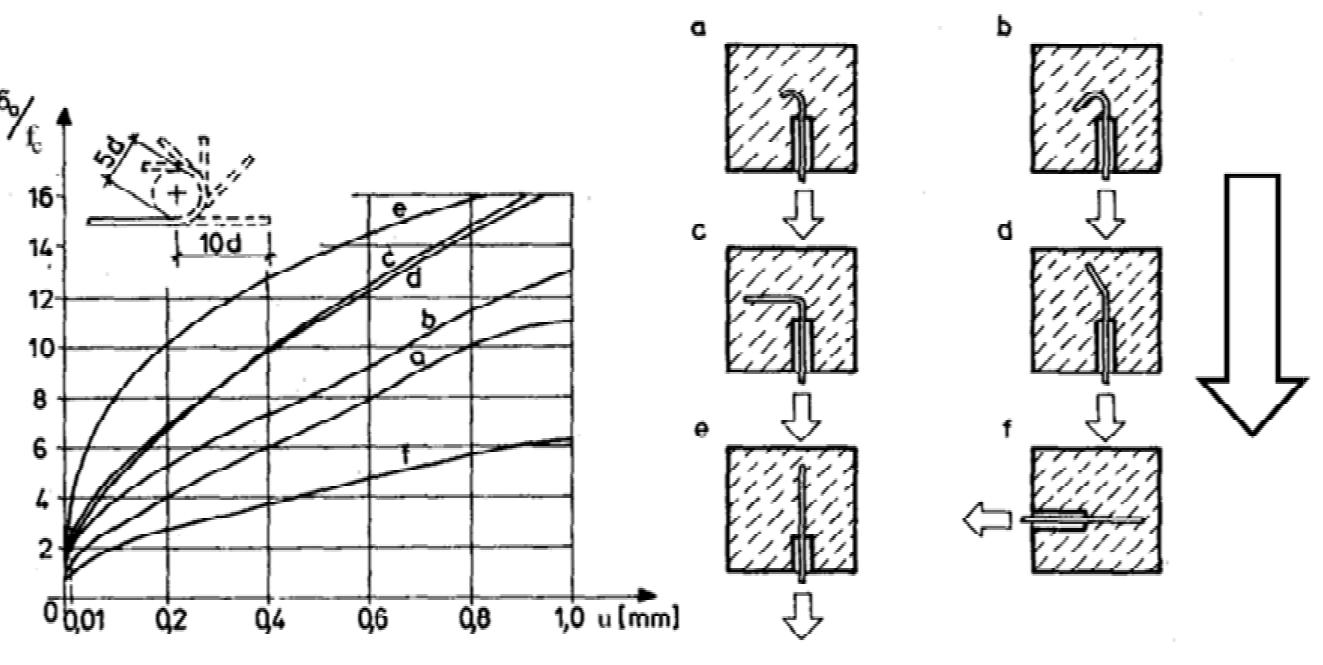


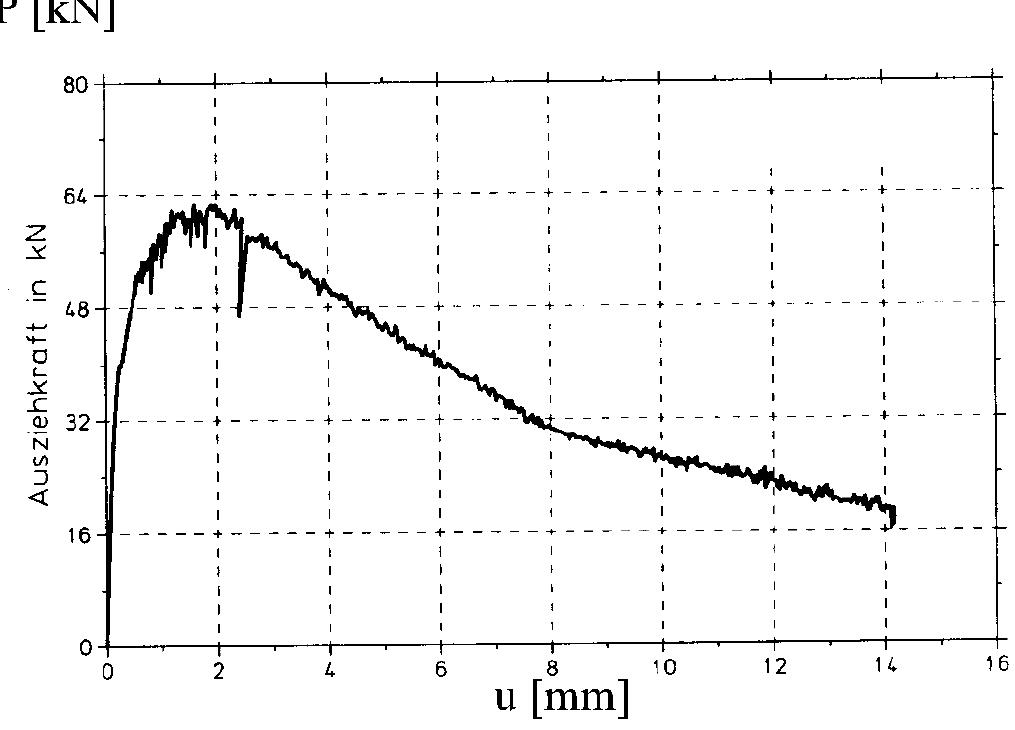













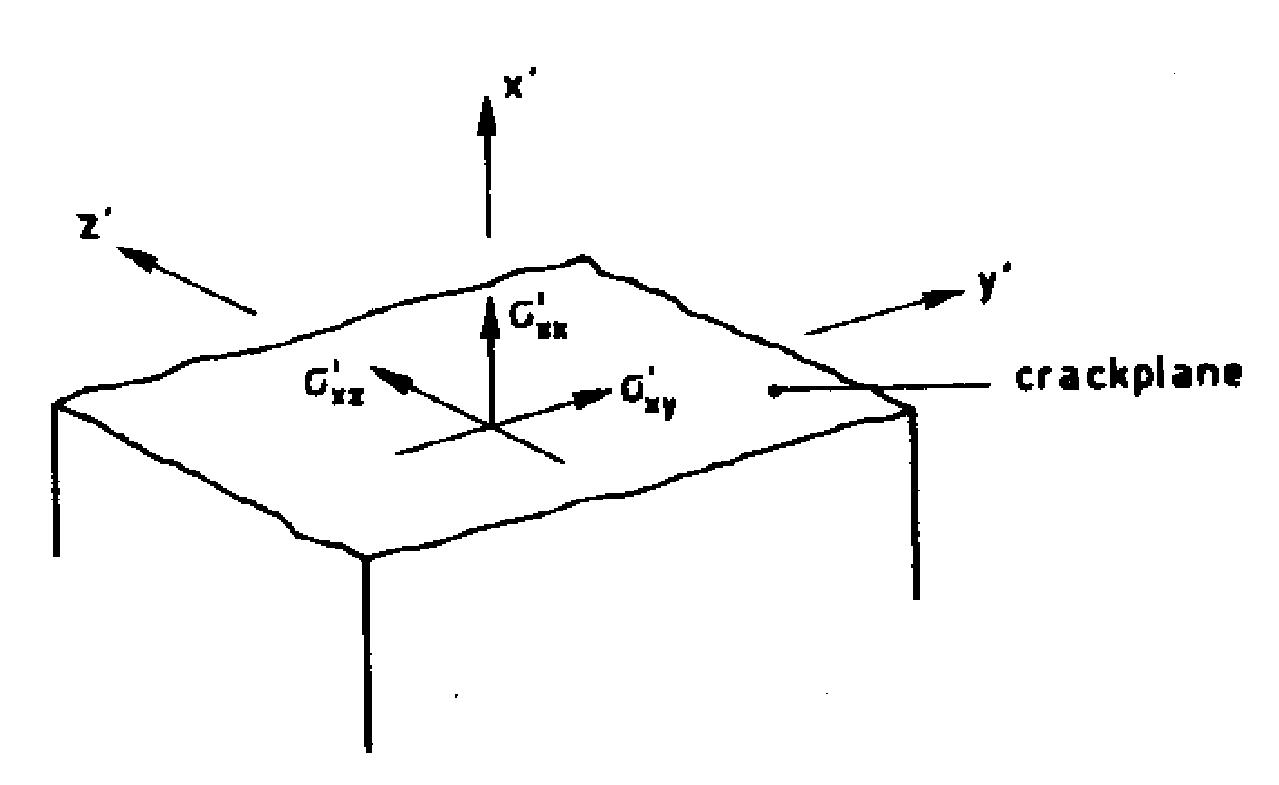





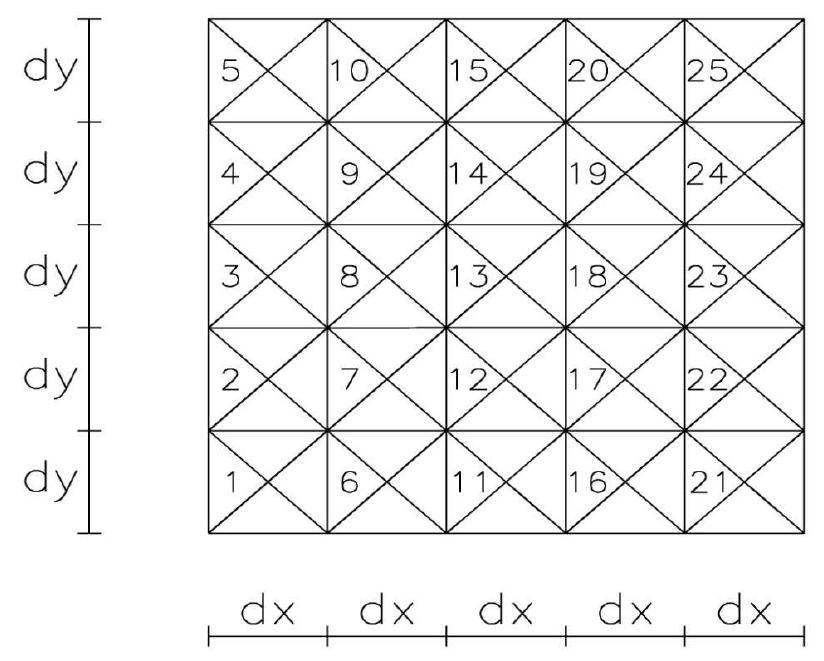

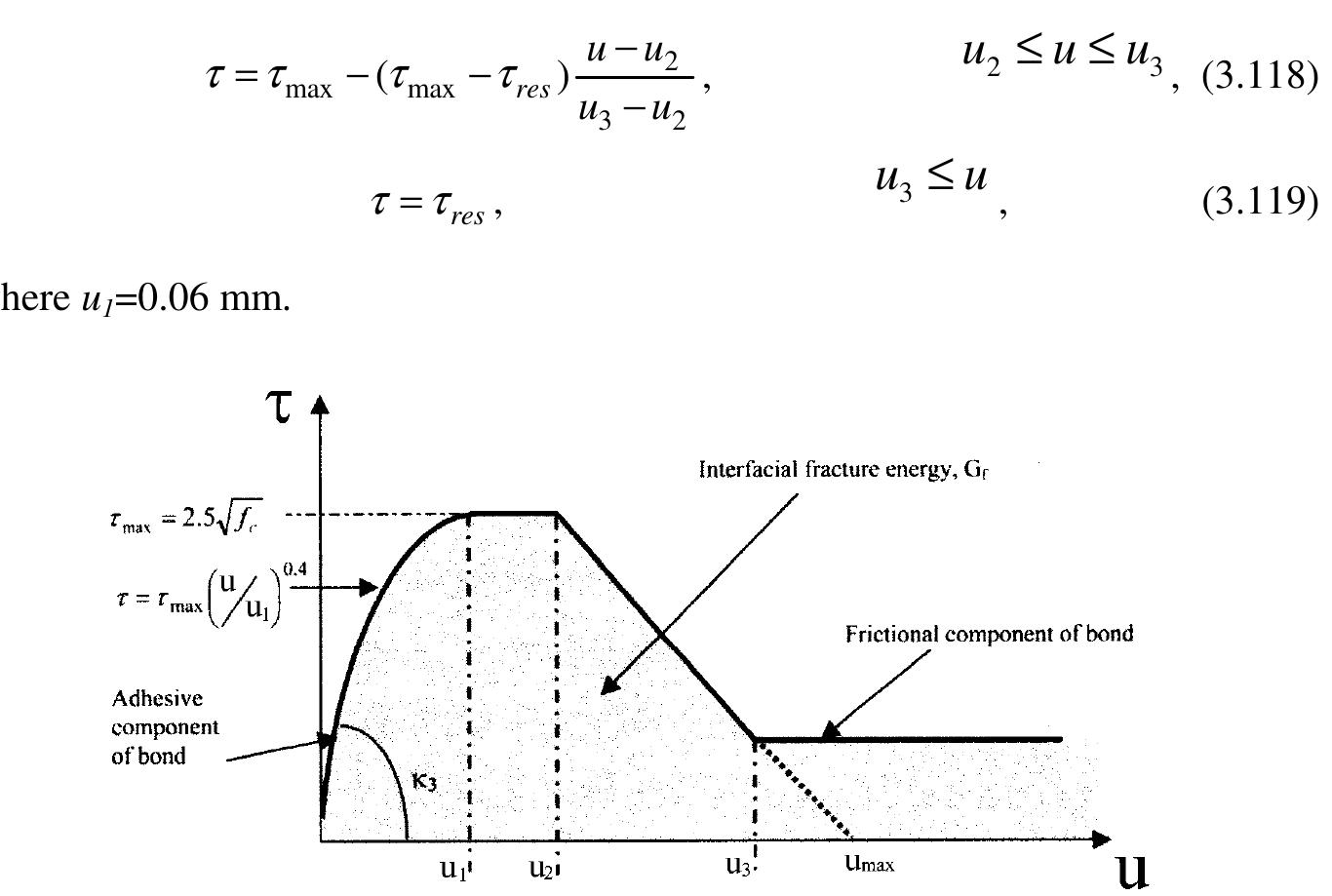






















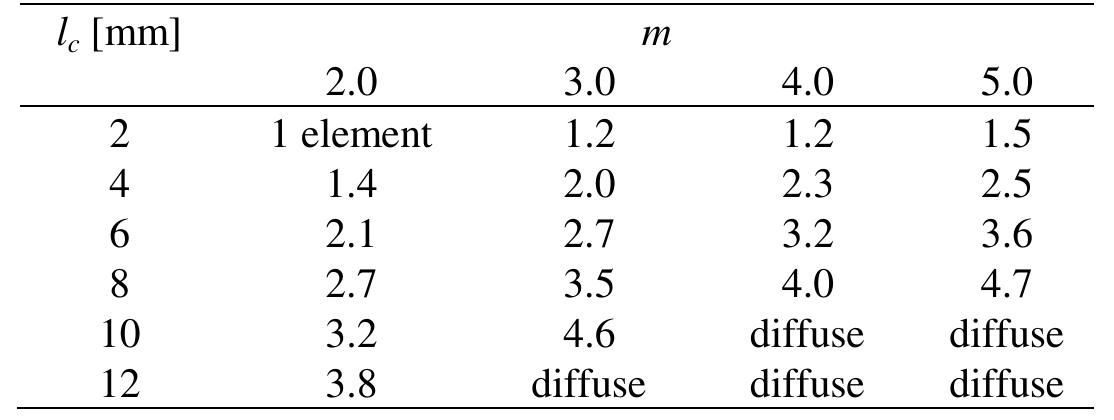
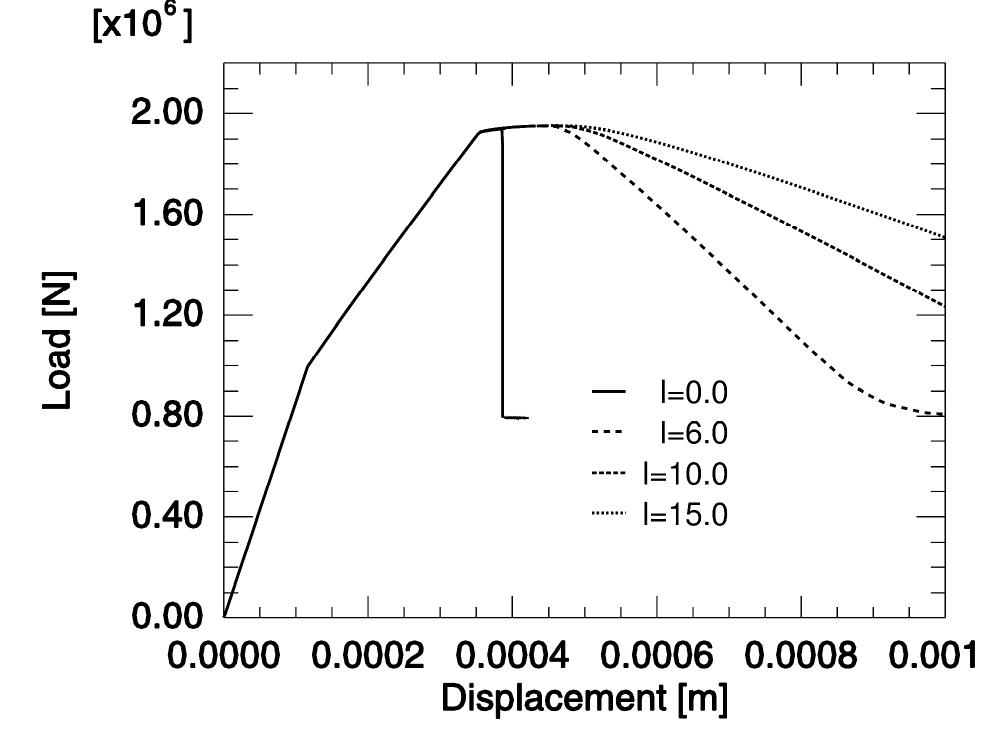




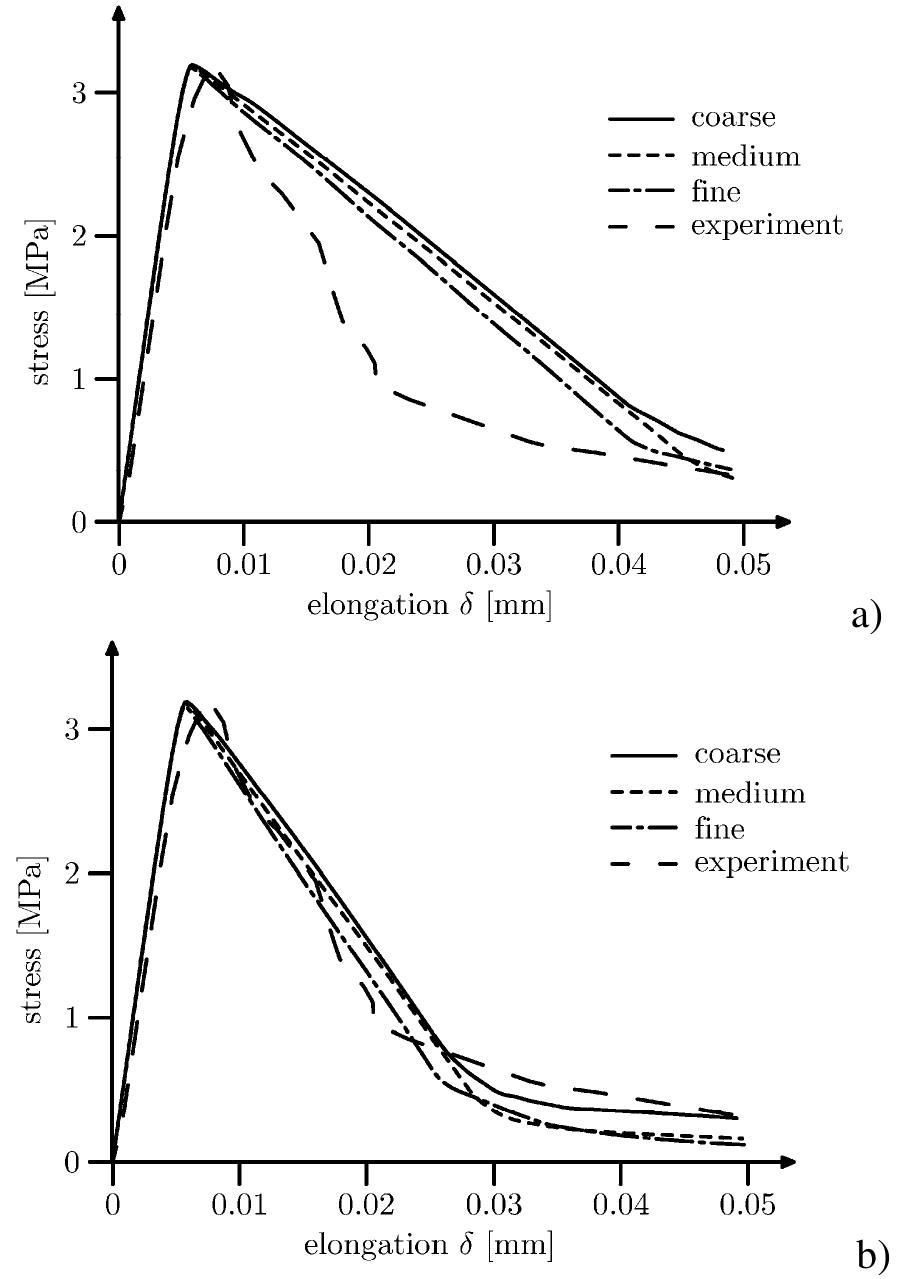
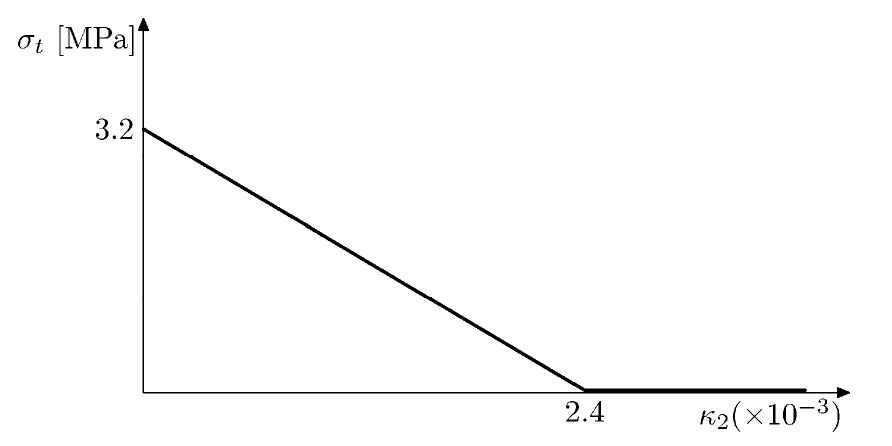





![Fig. 5.27 Relationship between calculated normalized loads: P(Ex,bt) and PAf,bt) during uniaxial tension (with /=5 mm) and ratio h/], as compared to size effect law by Bazant (2003) within: a) damage mechanics, b) elasto-plasticity (Bobinski and Tejchman 2006)](https://figures.academia-assets.com/37013038/figure_109.jpg)


































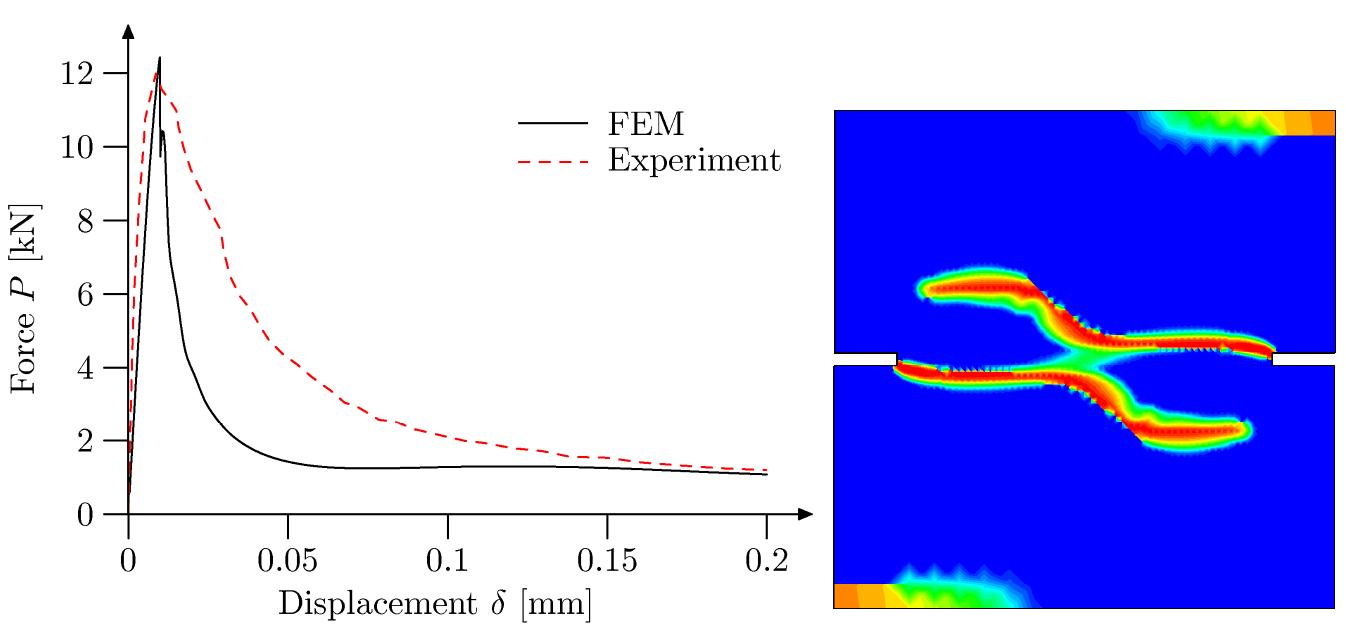

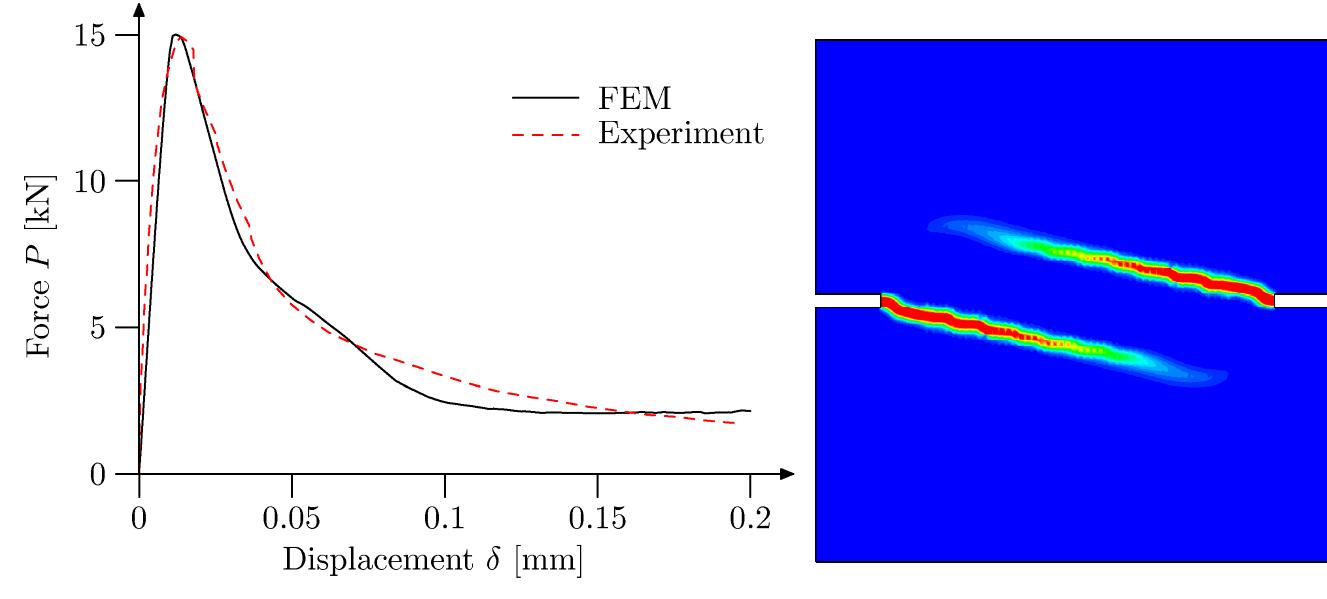
































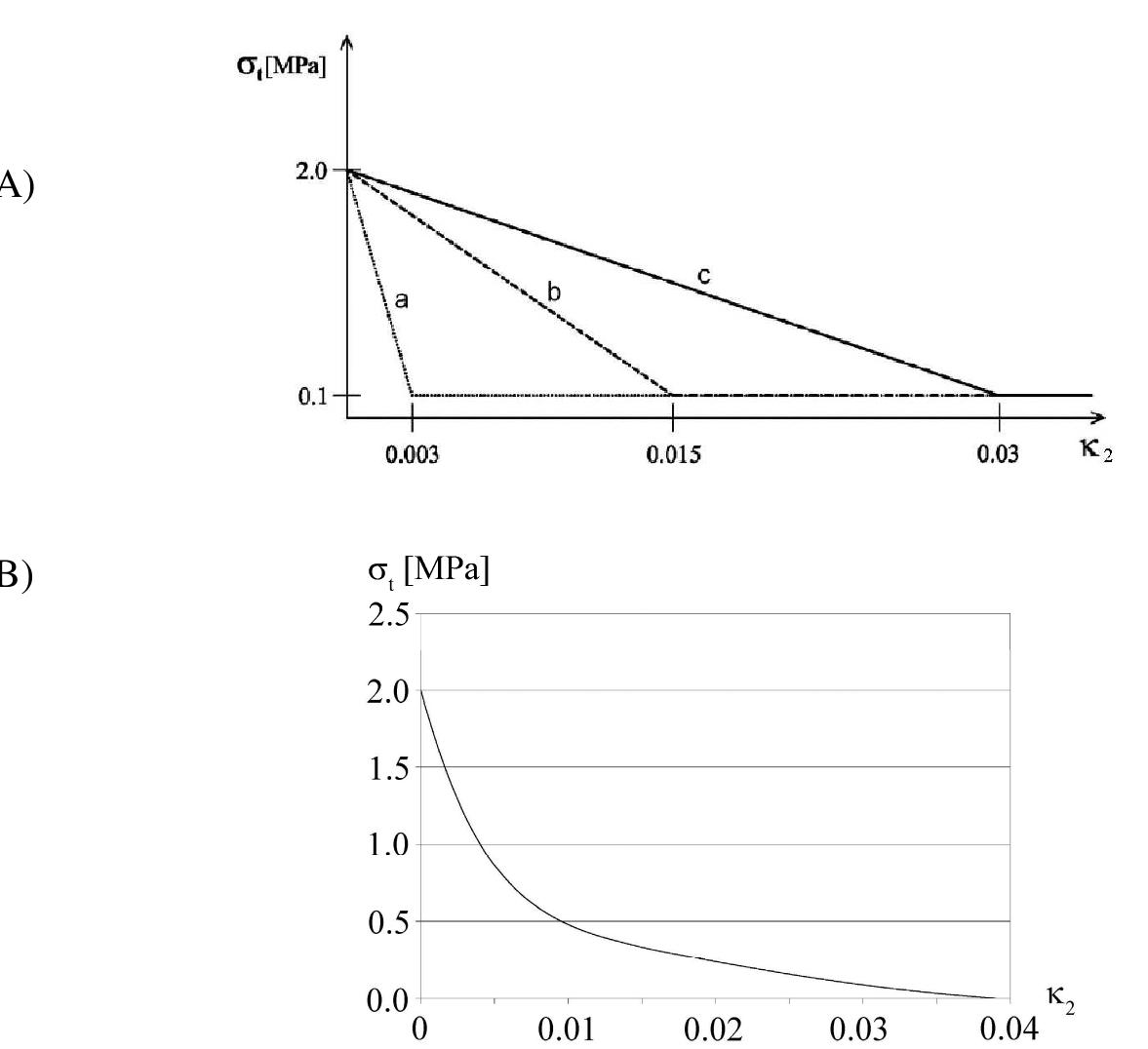















































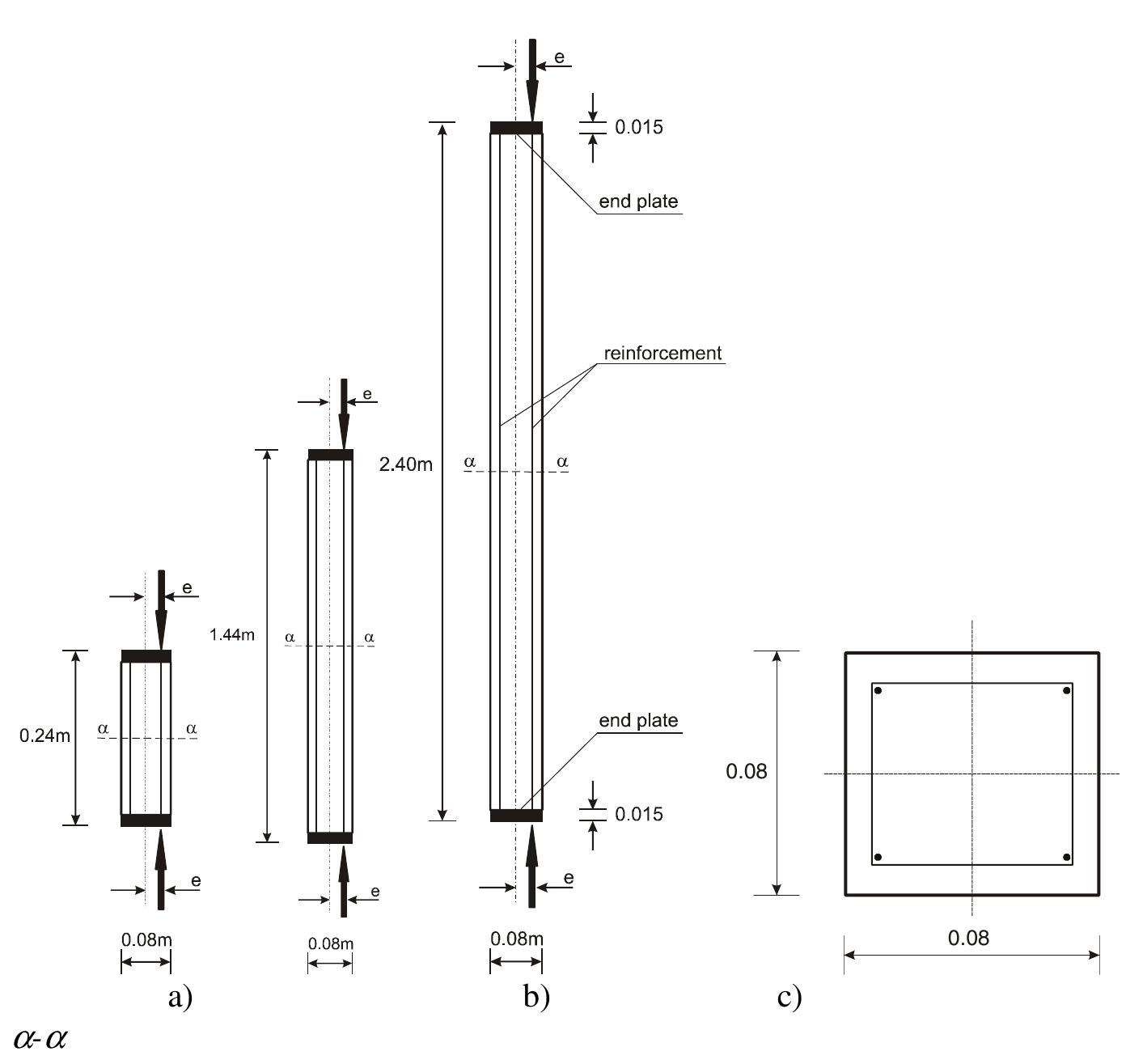








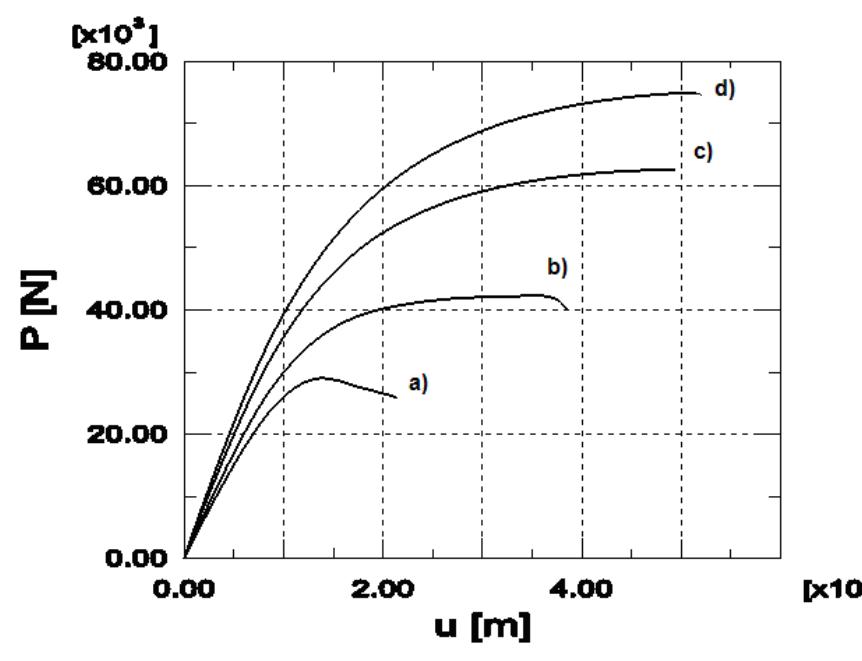








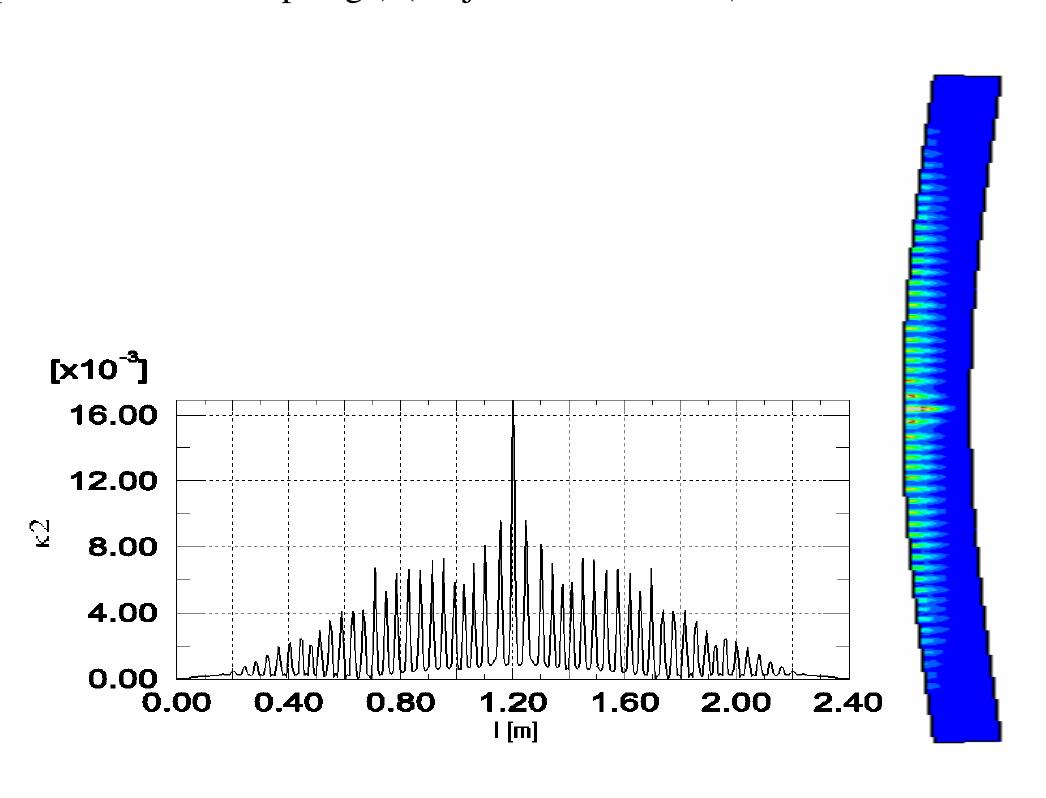









![[1] Kim and Lee (2000), [2] Hsu (1988), [3] Lloyd and Rangan (1996), [4] Bazant and Kwon (1994).](https://figures.academia-assets.com/37013038/table_014.jpg)


















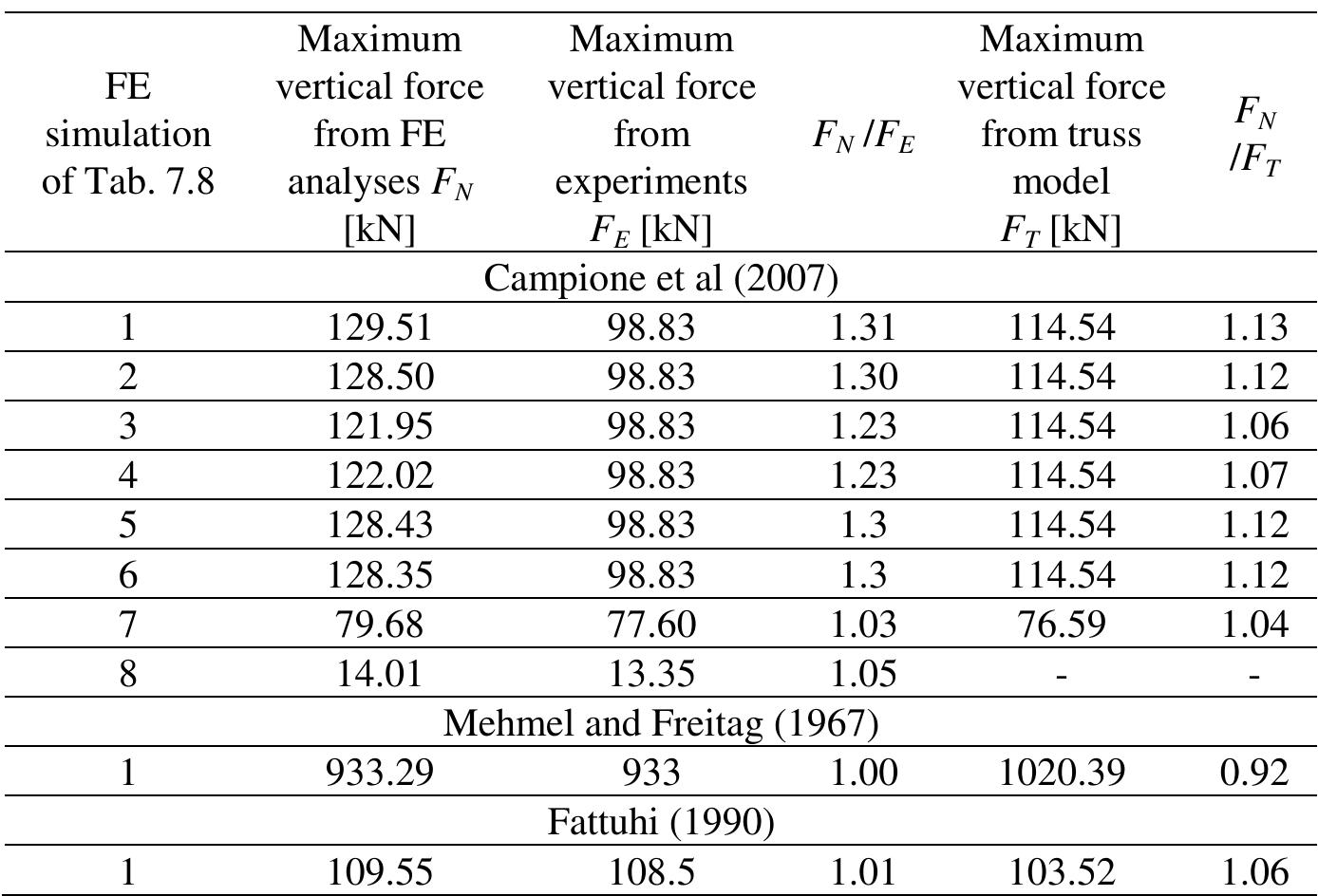





















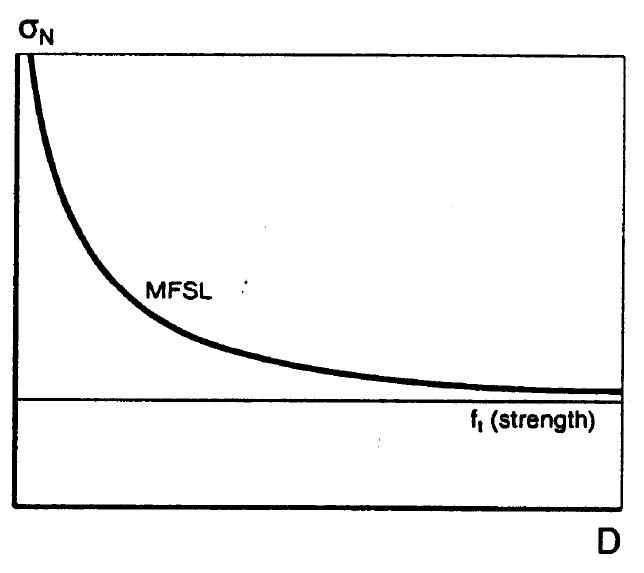




![Fig. 8.7 The correlation distances for different coefficients 2 [1/m] (Bobinski et al. 2009)](https://figures.academia-assets.com/37013038/figure_285.jpg)
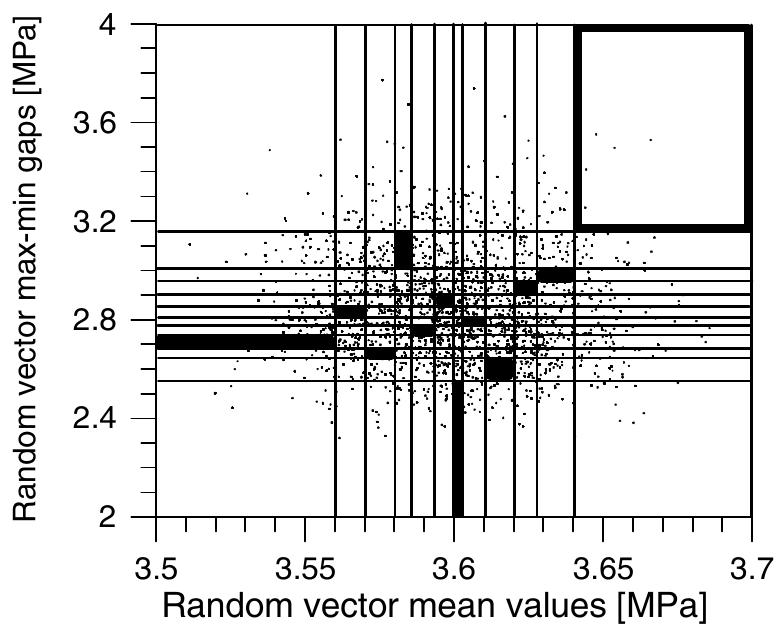




































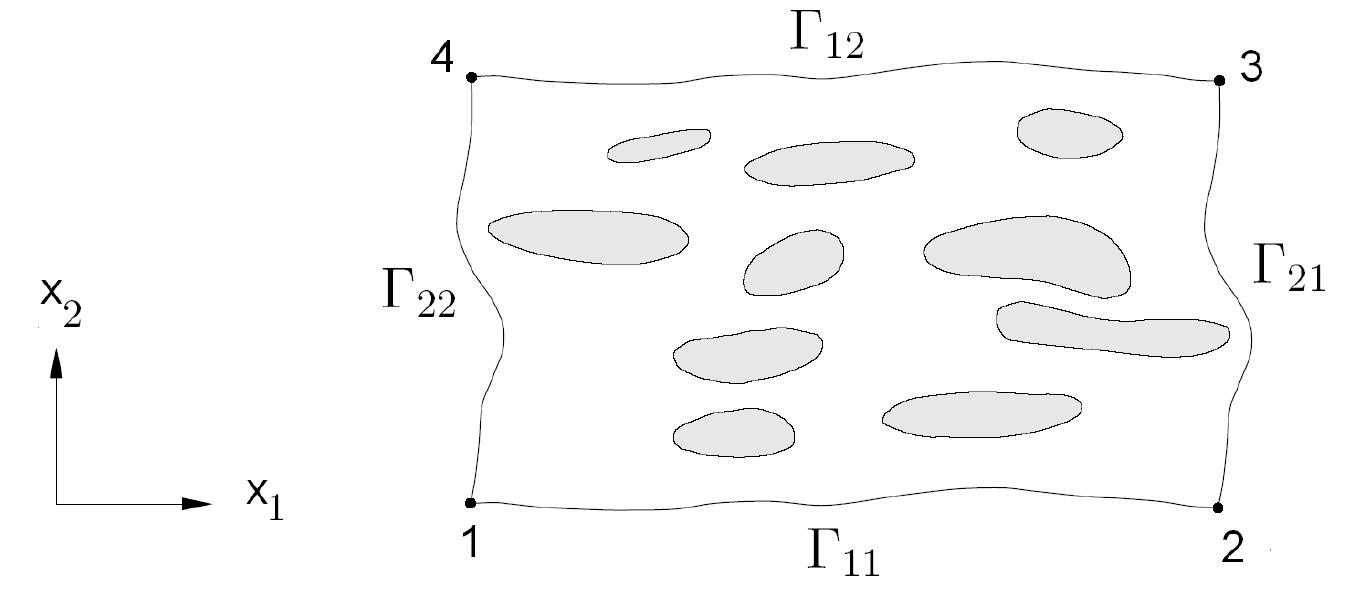





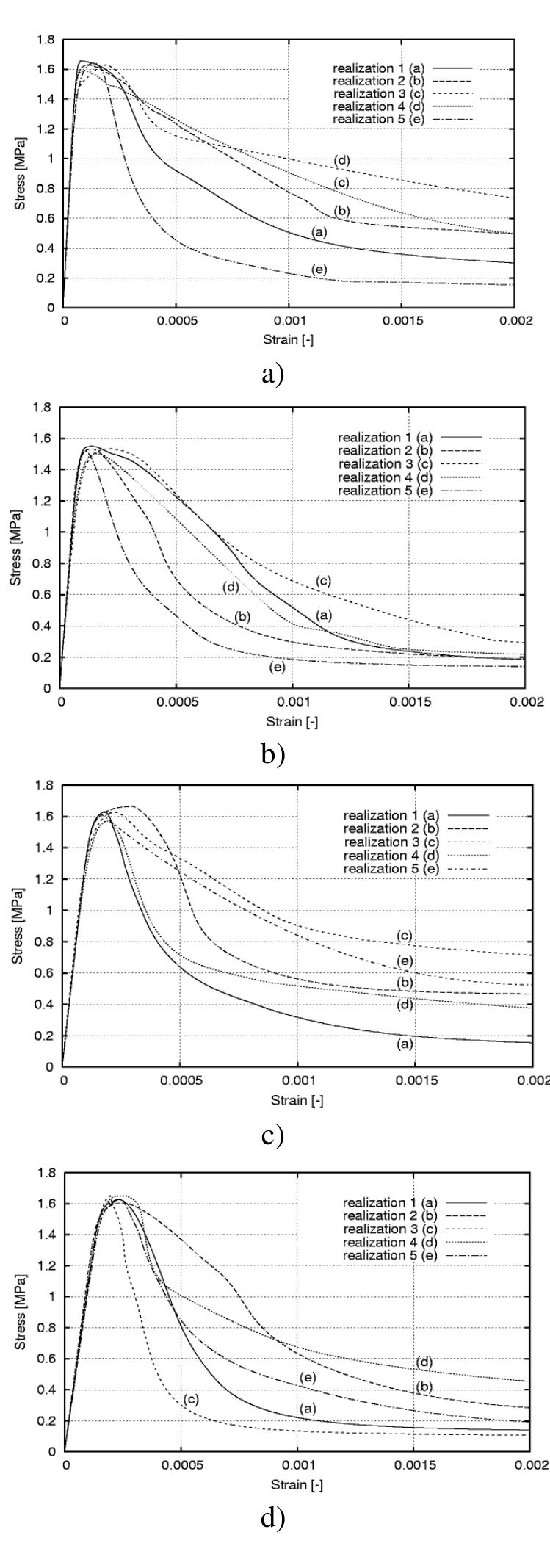


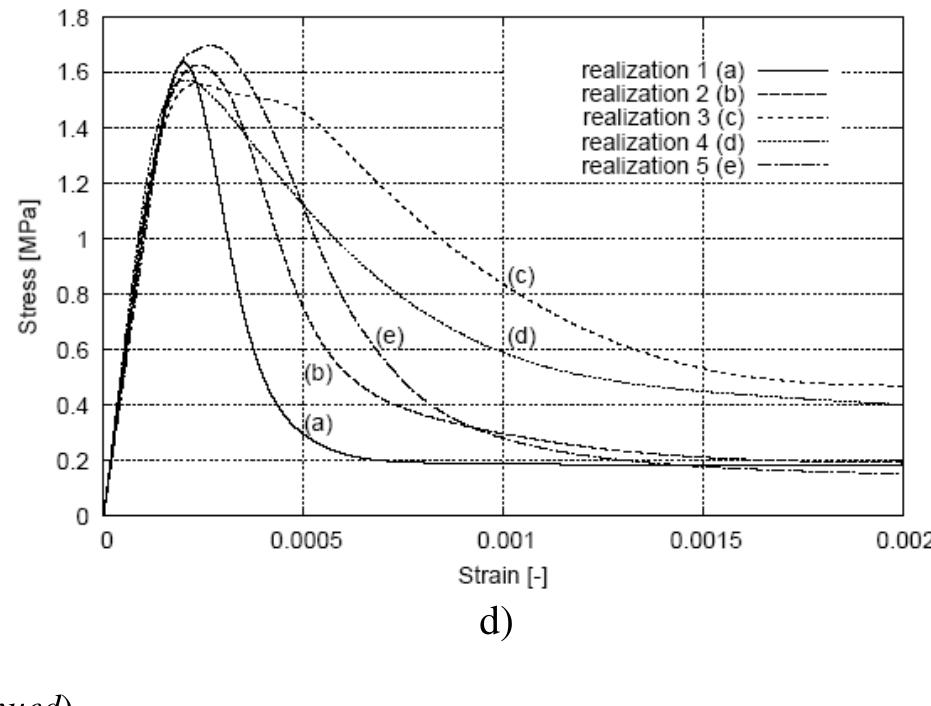












![Fig. 9.23 Formation of localized zone with mean width of w,=3.5-4.0 mm directly above notch in 3 different experiments (‘a’, ‘b’ and ‘c’) with small-size notched fine-grained concrete beam 80x320x40 mm? using DIC (vertical and horizontal axes denote coordinates in [mm] and colour scales strain intensity) (Skarzynski et al. 2011) digital images taken at a constant time increment from a professional digital camera (based on displacements, strains can be calculated) (White et al. 2003). The experimental set-up and results were described in detail by Skarzynski et al. (2011). The beams of the same size were also used by Le Bellégo et al. (2003). Figure 9.23 shows the formation of a localized zone on one side of the surface of a fine-grained small-size concrete beam above the notch from laboratory tests](https://figures.academia-assets.com/37013038/figure_344.jpg)


















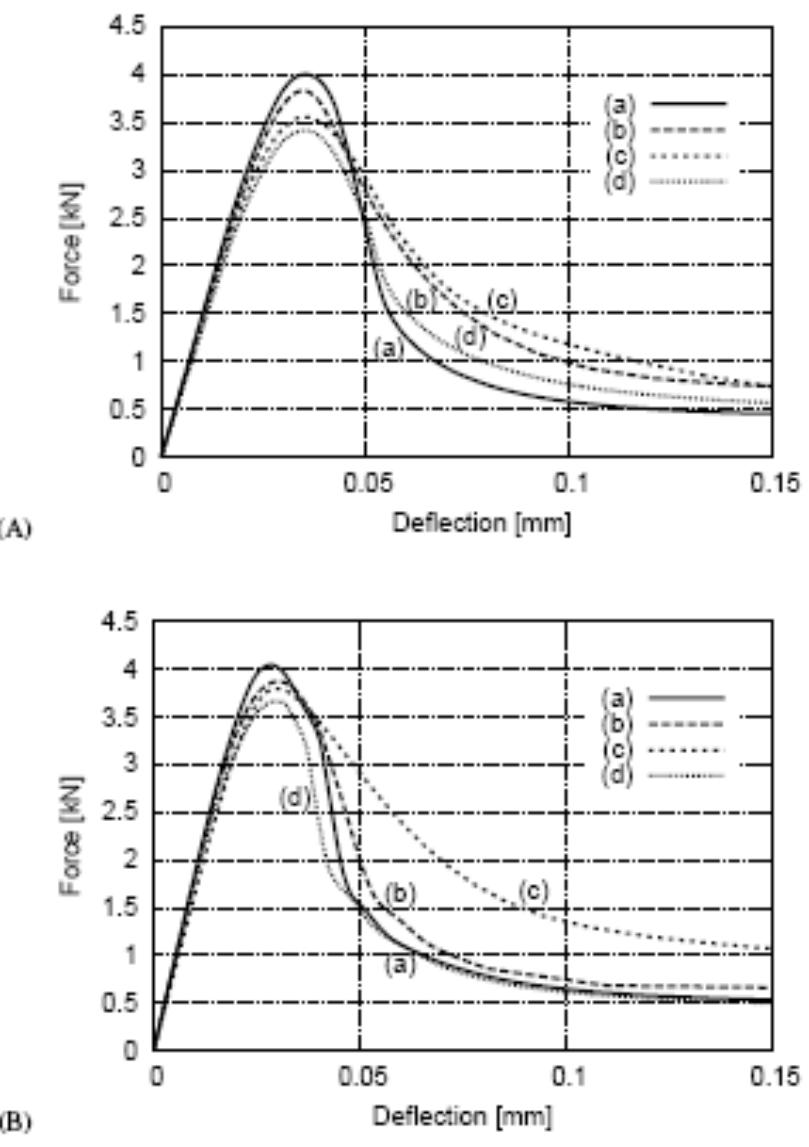






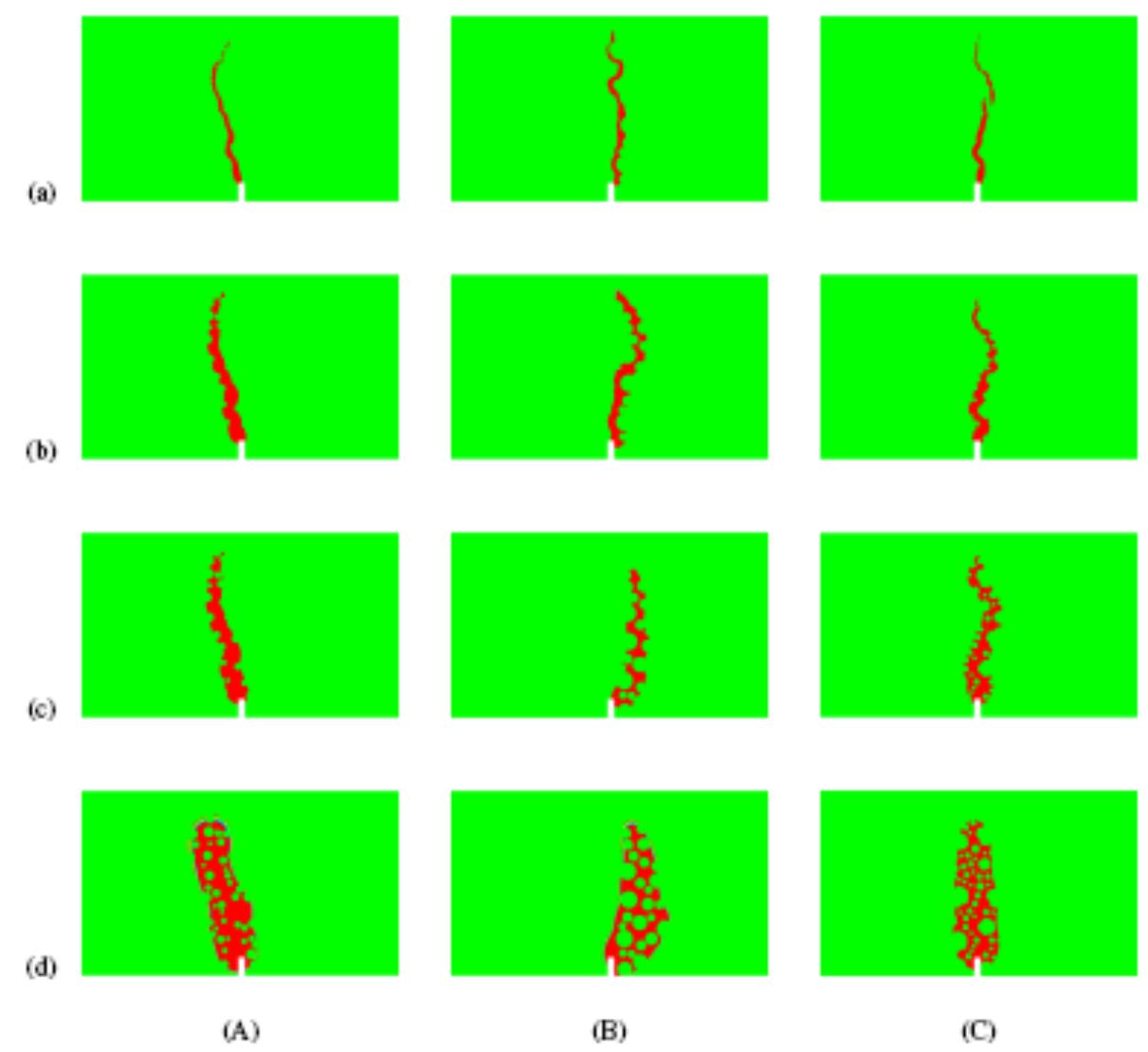




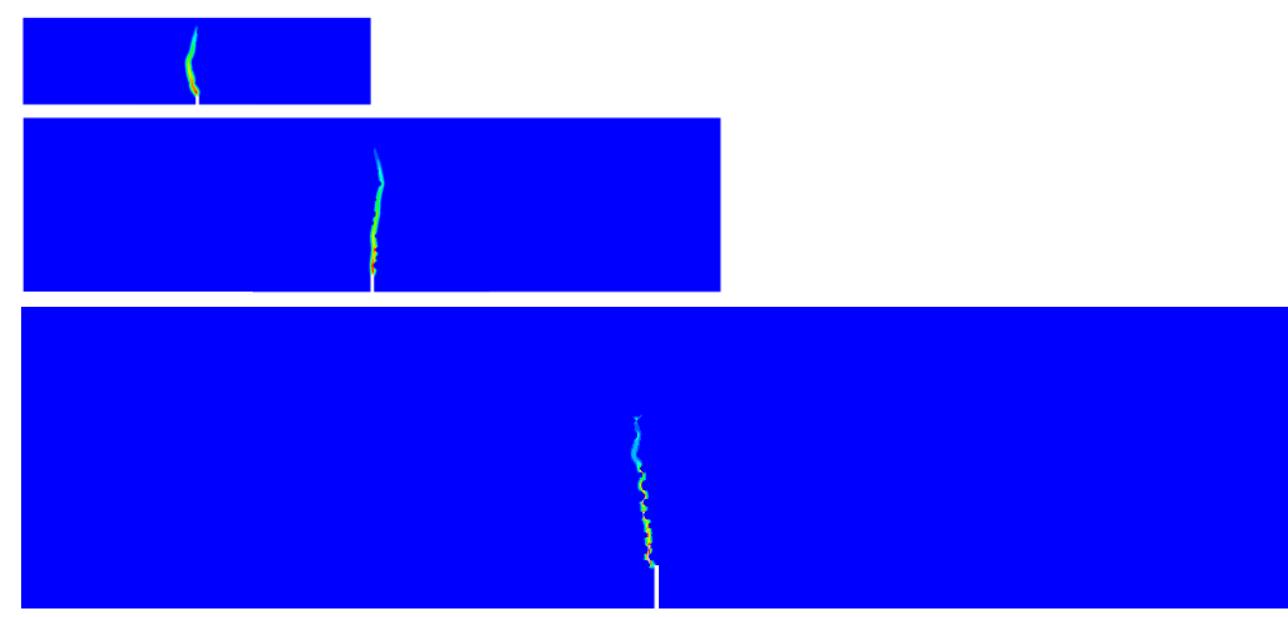
















Related papers
International Journal for Numerical and Analytical Methods in Geomechanics, 2012
A new phenomenological macroscopic constitutive model for the numerical simulation of quasi-brittle fracture and ductile concrete behavior, under general triaxial stress conditions, is presented. The model is particularly addressed to simulate a wide range of confinement stress states, as also, to capture the strong influence of the mean stress value in the concrete failure mechanisms.
2015
The paper describes two-dimensional meso-scale results of fracture in notched concrete beams under bending. Concrete was modelled as a random heterogeneous 4-phase material composed of aggregate particles, cement matrix, interfacial transitional zones and air voids. Within continuum mechanics, the simulations were carried out with the finite element method based on a isotropic damage constitutive model enhanced by a characteristic length of micro-structure. In addition, the discrete element method was used. The concrete micro- structure in calculations was directly taken from real concrete specimens based on 3D x-ray micro-computed tomography images and 2D images by the scanning electron microscope. ovides information and instructions for preparing a Full Paper to be included in the Proceedings of COMPLAS XIII Conference.
Materials and Structures, 2008
A recently developed FE-based mesostructural model for the mechanical behavior of heterogeneous quasi-brittle materials is used systematically to analyze concrete specimens in 2D. The numerical model is based on the use of zero-thickness interface elements equipped with a normal-shear traction-separation constitutive law representing nonlinear fracture, which may be considered a mixedmode generalization of Hillerborg's ''Fictitious Crack Model.'' Specimens with 4 9 4 and 6 9 6 arrays of aggregates are discretized into finite elements. Interface elements are inserted along the main lines in the mesh, representing potential crack lines. The calculations presented in this paper consist of uniaxial tension loading, and the continuum elements themselves are assumed to behave as linear elastic. In this way, the influence of various aspects of the heterogeneous geometry and interface parameters on the overall specimen response has been investigated. These aspects are aggregate volume fraction, type of arrangement and geometry, interface layout, and values of the crack model parameters chosen for both the aggregate-aggregate and matrix-aggregate interfaces. The results show a good qualitative agreement with experimental observations and illustrate the capabilities of the model. In the companion second part of the paper, the model is used to represent other loading states such as uniaxial compression, Brazilian test, or biaxial loading.
Mechanics Research Communications, 2017
On the basis of the strong discontinuity analysis, a discrete model expressed in terms of traction vectordisplacement jump has been constructed from a continuous model expressed in terms of stress-strain law. In the first part of the paper, this approach has been extended to a class of anisotropic continuum damage constitutive models [1]. In this second part of the paper, the proposed class of discrete anisotropic damage constitutive models is particularized. More precisely, a micromechanical-based anisotropic damage constitutive model is derived. This model accounts in a natural manner for particular crack families orientation. The aims of this paper are (i) to illustrate the capabilities of the proposed discrete enhanced model in reproducing the induced anisotropy appearing in quasi-brittle materials when cracking and (ii) to assess the numerical robustness of the time integration scheme. For this purpose, two numerical examples at the material point level are exposed after a brief presentation of the time integration scheme. The correspondence between the continuous and the discrete model as well as the induced anisotropy features are emphasized.
Engineering Fracture Mechanics, 2010
A coupled plasticity-damage model for plain concrete is presented in this paper. Based on continuum damage mechanics (CDM), an isotropic and anisotropic damage model coupled with a plasticity model is proposed in order to effectively predict and simulate plain concrete fracture. Two different damage evolution laws for both tension and compression are formulated for a more accurate prediction of the plain concrete behavior. In order to derive the constitutive equations and for the easiness in the numerical implementation, in the CDM framework the strain equivalence hypothesis is adopted such that the strain in the effective (undamaged) configuration is equivalent to the strain in the nominal (damaged) configuration. The proposed constitutive model has been shown to satisfy the thermodynamics requirements. Detailed numerical algorithms are developed for the finite element implementation of the proposed coupled plasticity-damage model. The numerical algorithm is coded using the user subroutine UMAT and then implemented in the commercial finite element analysis program Abaqus. Special emphasis is placed on identifying the plasticity and damage model material parameters from loading–unloading uniaxial test results. The overall performance of the proposed model is verified by comparing the model predictions to various experimental data, such as monotonic uniaxial tension and compression tests, monotonic biaxial compression test, loading–unloading uniaxial tensile and compressive tests, and mixed-mode fracture tests.
Continuum Mechanics and Thermodynamics, 2010
The aim of this study is to propose a model describing the evolution of the mechanical properties of micro-cracked bodies under slow mechanical loading. To do so, we consider each material element of the body as a domain of finite size comprising one single crack. The size and orientation of the latter are treated as Lagrangian coordinates that are complementary to those usually describing the translations of the material elements. As such, their evolution is driven by some balance equations that are provided by the theory of continua with microstructure and by fit constitutive equations. To deal with the latter, we then call upon fracture mechanics. The model is applied to concrete within some simplifying assumptions and the case of a bar tensioned by a hard device is studied. Crack propagation and stiffness loss are determined when the loading increases, they are compared to experimental results.
2003
Modelling concrete continuum models, namely a single parameter isotropic damage model (SDM) and a rotating crack model (RCM), are analysed, developed and implemented into an existing modular computer program (FEMAS, Finite Element Modulus of Arbitrary Structures, Ruhr-Universität Bochum, Germany). These models are of interest not only for concrete but also for other-so-called quasi-brittle-materials (such as masonry, rocks and some kind of soils), which are frequently used by civil engineers. 3. PHYSICAL PARAMETERS CHARACTERIZING TENSIONAL CRACKING Cracking and consequent loss of mechanical properties occur due to the proliferation and the coalescence of micro-defects and micro-voids, which exist in concrete even before the application of any external action.
2010
A meso-scale analysis is performed to determine the fracture process zone of concrete subjected to uniaxial tension. The meso-structure of concrete is idealised as stiff aggregates embedded in a soft matrix and separated by weak interfaces. The mechanical response of the matrix, the inclusions and the interface between the matrix and the inclusions is modelled by a discrete lattice approach. The inelastic response of the lattice elements is described by a damage approach, which corresponds to a continuous reduction of the stiffness of the springs. The fracture process in uniaxial tension is approximated by an analysis of a two-dimensional cell with periodic boundary conditions. The spatial distribution of dissipated energy density at the meso-scale of concrete is determined. The size and shape of the deterministic FPZ is obtained as the average of random meso-scale analyses. Additionally, periodicity of the discretisation is prescribed to avoid influences of the boundaries of the periodic cell on fracture patterns. The results of these analyses are then used to calibrate an integral-type nonlocal model.
The effects of the descending branch of the tensile stress-strain curve, fracture energy, grid refinement, and load-step size on the response of finite element models of notched concrete beams are studied. The width of the process zone and constraint of crack angles are investigated. Nonlinearity is limited to cracking of the concrete. A limiting tensile stress criteria n governs crack initiation. Concrete is represented as linear elastic prior to cracking. Cracks are modeled using a smeared representa ion. The post-crackir.g behavior is controlled by the shape of the descending branch, fracture energy, crack angle, and element size. Unloading occurs at a slope equal to the initial modulus of the material. Load-deflection curves and cracking patterns are used to evaluate the beam's response. Com pari sons of the process zone size are made. All analyses are performed on a 200 X 200 X GOO mm concrete beam, with an initial notch length of 80 mm. The fracture energy, tensile strength, and shape of the descending branch interact to determine the stiffness and general behavior of the specimen. The width of the process zone has a negligible influence on the beam's response. The importance of proper crack orientation is demonstrated. The model is demonstrated to be objective with respect to grid refinement and load-step size. 17. Document Analysis a. Descriptors (fracturing), concrete, crack localization, cracking finite elements, fracture mechanics, fracture process zone, load-deflection, s tructura 1 engineering, tension softening, unloading b. Identifiers/Open-Ended Terms c. COSATI Field/Group 18. Availability Statement 19. Security Class (This Report)

Loading Preview
Sorry, preview is currently unavailable. You can download the paper by clicking the button above.
References (377)
- Bažant, Z., Planas, J.: Fracture and size effect in concrete and other quasi-brittle materials. CRC Press LLC (1998)
- Bažant, Z., Jirásek, M.: Nonlocal integral formulations of plasticity and damage: survey of progress. Journal of Engineering Mechanics 128(11), 1119-1149 (2002)
- Belytschko, T., Fish, J., Englemann, B.E.: A finite element method with embedded localization zones. Computer Methods in Applied Mechanics 70(1), 59-89 (1988)
- Belytschko, T., Moes, N., Usui, S., Parimi, C.: Arbitrary discontinuities in finite elements. International Journal for Numerical Methods in Engineering 50(4), 993-1013 (2001)
- de Borst, R., Mühlhaus, H.-B., Pamin, J., Sluys, L.J.: Computational modelling of localization of deformation. In: Owen, D.R.J., Onate, H., Hinton, E. (eds.) Proceedings of the 3rd International Conference on Computational Plasticity, Swansea, pp. 483-508. Pineridge Press (1992)
- de Borst, R., Sluys, L.J., Mühlhaus, H.-B., Pamin, J.: Fundamental issues in finite element analyses of localization of deformation. Engineering Computations 10(2), 99-121 (1993)
- Gálvez, J.C., Červenka, J., Cendón, D.A., Saouma, V.: A discrete crack approach to normal/shear cracking of concrete. Cement and Concrete Research 32(10), 1567-1585 (2002)
- Jirásek, M.: Comparative study on finite element with embedded discontinuities. Computer Methods in Applied Mechanics 188(1-3), 307-330 (2000)
- Mühlhaus, H.-B.: Scherfugenanalyse bei granularem Material im Rahmen der Cosserat- Theorie. Ingen. Archiv. 56(5), 389-399 (1986)
- Oliver, J., Huespe, A.E., Sanchez, P.J.: A comparative study on finite elements for capturing strong discontinuities: E-FEM vs X-FEM. Computer Methods in Applied Mechanics and Engineering 195(37-40), 4732-4752 (2006)
- Ortiz, M., Pandolfi, A.: Finite-deformation irreversible cohesive elements for three- dimensional crack-propagation analysis. International Journal for Numerical Methods in Engineering 44(9), 1267-1282 (1999)
- Pamin, J.: Gradient-dependent plasticity in numerical simulation of localization phenomena. PhD Thesis, University of Delft (1994)
- Simone, A., Sluys, L.J.: The use of displacement discontinuities in a rate-dependent medium. Computer Methods in Applied Mechanics and Engineering 193(27-29), 3015-3033 (2004)
- Tejchman, J.: Scherzonenbildung und Verspannugseffekte in Granulaten unter Berücksichtigung von Korndrehungen. Veröffentlichung des Instituts für Boden-und Felsmechanik der Universität Karlsruhe 117, 1-236 (1989)
- Tejchman, J.: FE modeling of shear localization in granular bodies with micro-polar hypoplasticity. In: Wu, W., Borja, R. (eds.) Springer Series in Geomechanics and Geoengineering. Springer, Heidelberg (2008)
- Zhou, F., Molinari, J.F.: Dynamic crack propagation with cohesive elements: a methodology to address mesh dependency. International Journal for Numerical Methods in Engineering 59(1), 1-24 (2004) References
- Azizinamini, A., Stark, M., Roller, J.J., Ghosh, S.K.: Bond performance of reinforcing bars embedded in high-strength concrete. ACI Structural Journal (American Concrete Institute) 90(5), 554-561 (1993)
- Bažant, Z., Planas, J.: Fracture and size effect in concrete and other quasi-brittle materials. CRC Press LLC (1998)
- Belgin, C.M., Sener, S.: Size effect on failure of overreinforced concrete beams. Engineering Fracture Mechanics 75(8), 2308-2319 (2008)
- Bischoff, P.H., Perry, S.H.: Compressive behaviour of concrete at high strain rates. Materials and Structures 24(6), 425-450 (1991)
- Bischoff, P., Perry, S.H.: Impact behaviour of plane concrete loaded in uniaxial compression. Journal of Engineering Mechancis ASCE 121(6), 685-693 (1995)
- Bolander, J.J., Satake, M., Hikosaka, H.: Bond degradation near developing cracks in reinforced concrete structures. Memoirs of the Faculty of Engineering 52(4), 379-395 (1992)
- Dahou, Z., Mehdi, Z., Castel, A., Ghomarid, F.: Artificial neural network model for steel- concrete bond prediction. Engineering Structures 31(8), 1724-1733 (2009)
- Dantu, P.: Etudes des contraintes dans les milieux heterogenes. Application au beton. Annales des l'Institut de Batiment et des Travaux Publics 11(121), 55 (1958)
- Darwin, D., Graham, E.K.: Effect of deformation height and spacing on bond strength of reinforcing bars. ACI Materials Journal 90(6), 646-657 (1993) 1986, Sluys 1992, Tejchman and Wu 1993, Tejchman et al. 1999), a strain gradient (Zbib and Aifantis 1989, Mühlhaus and Aifantis 1991, Pamin 1994, de Borst and Pamin 1996, Pamin 2004, Sluys and de Borst 1994, Peerlings et al. 1998, Meftah and Reynouard 1998, Pamin and de Borst 1998, Chen et al. 2001, Zhou et al. 2002, Askes and Sluys 2003), a viscous (Sluys 1992, Sluys and de Borst 1994, Neddleman 1988, Loret and Prevost 1990, Lodygowski and Perzyna 1997, Winnicki et al. 2001, Pedersen et al. 2008, Winnicki 2009) and a non-local (Pijaudier-Cabot and Bažant 1987, Bažant and Lin, 1988, Brinkgreve 1994, de Vree et al. 1995, Strömberg and Ristinmaa 1996, Marcher and Vermeer 2001, Maier 2002, 2003, di Prisco et al. 2002, Bažant and Jirásek 2002, Jirásek and Rolshoven 2003, Tejchman 2004). Other numerical technique which also enables to remedy the drawbacks of a standard FE-method and to obtain mesh-independency during formation of cracks, are approaches with strong discontinuities which enrich continuous displacement modes of the standard finite elements with additional discontinuous displacements (Belytschko et al. 2001, 2009, Simone et al. 2002, Asferg et al. 2006, Oliver et al. 2006) or approaches with cohesive (interface) elements (Ortiz and Pandolfi 1999, Zhou and Molinari 2004) (Chapters 4.1 and 4.2). In the first approaches, discontinuity paths are placed inside the elements irrespective of the size and specific orientation. In the latter approaches, discontinuity paths are defined at the edges between standard finite elements. The most realistic approach to concrete (a continuous-discontinuous approach) was used by Moonen et al. (2008). Below two different regularization methods (integral-type non-local and explicit second-gradient) are described in detail.
- Asferg, P.N., Poulsen, P.N., Nielsen, L.O.: Modelling of crack propagation in concrete applying the XFEM. In: Meschke, G., de Borst, R., Mang, H., Bicanic, N. (eds.) Computational Modelling of Concrete Structures, EURO-C, pp. 33-42. Taylor and Francis (2006)
- Askes, H., Sluys, L.J.: A classification of higher-order strain gradient models in damage mechanics. Archive of Applied Mechanics 53(5-6), 448-465 (2003)
- Bažant, Z.P., Bhat, P.D.: Endochronic theory of inelasticity and failure of concrete. Journal of Engineering Mechanics Division ASCE 102(4), 701-722 (1976)
- Bažant, Z.: Endochronic inelasticity and incremental plasticity. International Journal of Solids and Structures 14(9), 691-714 (1978)
- Bažant, Z.P., Shieh, C.L.: Endochronic model for nonlinear triaxial behaviour of concrete. Nuclear Engineering and Design 47(2), 305-315 (1978)
- Bažant, Z.P., Cedolin, L.: Blunt crack band propagation in finite element analysis. Journal of Engineering Mechanics Division ASCE 105(2), 297-315 (1979)
- Bažant, Z.P., Oh, B.H.: Crack band theory for fracture of concrete. Materials and Structures RILEM 16(93), 155-177 (1983)
- Bažant, Z.P., Lin, F.: Non-local yield limit degradation. International Journal for Numerical Methods in Engineering 26(8), 1805-1823 (1988)
- Bažant, Z., Ožbolt, J.: Non-local microplane model for fracture, damage and size effect in structures. Journal of Engineering Mechanics ASCE 116(11), 2485-2505 (1990)
- Bažant, Z., Jirásek, M.: Nonlocal integral formulations of plasticity and damage: survey of progress. Journal of Engineering Mechanics 128(11), 1119-1149 (2002)
- Belytschko, T., Moes, N., Usui, S., Parimi, C.: Arbitrary discontinuities in finite elements. International Journal for Numerical Methods in Engineering 50(4), 993-1013 (2001)
- Belytschko, T., Gracie, R., Ventura, G.: A review of extended/generalized finite element methods for material modeling. Modelling and Simulation in Material Science and Engineering 17(4), 1-24 (2009)
- Bhandari, A.R., Inoue, J.: Experimental study of strain rates effects on strain localization characteristics of soft rocks. Soils and Foundations 45(1), 125-140 (2005)
- Bobiński, J., Tejchman, J.: Numerical simulations of localization of deformation in quasi- brittle materials within non-local softening plasticity. Computers and Concrete 1(4), 433-455 (2004)
- Bobiński, J., Tejchman, J.: Modelling of strain localization in quasi-brittle materials with a coupled elasto-plastic-damage model. International Journal for Theoretical and Applied Mechanics 44(4), 767-782 (2006)
- Bobiński, J.: Implementacja i przykłady zastosowań nieliniowych modeli betonu z nielokalnym osłabieniem. PhD Thesis, Gdańsk University of Technology (2006)
- Bobiński, J., Tejchman, J.: Continuous and discontinuous modeling of cracks in concrete elements. In: Bicanic, N., de Borst, R., Mang, H., Meschke, G. (eds.) Modelling of Concrete Structures, pp. 263-270. Taylor and Francis Group, London (2010)
- Bolander, J.E., Sukumar, N.: Irregular lattice model for quasi-static crack propagation. Physical Review B 71(9), 094106(2005)
- Borino, G., Failla, B., Parrinello, F.: A symmetric nonlocal damage theory. International Journal of Solids and Structures 40(13-14), 3621-3645 (2003)
- Brinkgreve, R.B.J.: Geomaterial models and numerical analysis of softening. Phd Thesis, Delft University of Technology (1994)
- di Prisco, C., Imposimato, S., Aifantis, E.C.: A visco-plastic constitutive model for granular soils modified according to non-local and gradient approaches. International Journal for Numerical and Analytical Methods in Geomechanic 26(2), 121-138 (2002)
- D'Addetta, G.A., Kun, F., Ramm, E.: On the application of a discrete model to the fracture process of cohesive granular materials. Granular Matter 4(2), 77-90 (2002)
- Donze, F.V., Magnier, S.A., Daudeville, L., Mariotti, C.: Numerical study of compressive behaviour of concrete at high strain rates. Journal of Engineering Mechanics ASCE 125(10), 1154-1163 (1999)
- Dörr, K.: Ein Beitag zur Berechnung von Stahlbetonscheiben unter Berücksichtigung des Verbundverhaltens. Phd Thesis, Darmstadt University (1980)
- Dragon, A., Mróz, Z.: A continuum model for plastic-brittle behaviour of rock and concrete. International Journal of Engineering Science 17(2) (1979)
- Etse, G., Willam, K.: Fracture energy formulation for inelastic behaviour of plain concrete. Journal of Engineering Mechanics ASCE 120(9), 1983-2011 (1994)
- Ferrara, I., di Prisco, M.: Mode I fracture behaviour in concrete: nonlocal damage modeling. ASCE Journal of Engineering Mechanics 127(7), 678-692 (2001)
- Fleck, N.A., Hutchinson, J.W.: A phenomenological theory for strain gradient effects in plasticity. Journal of Mechanics and Physics of Solids 41(12), 1825-1857 (1993)
- Gatuingt, G., Pijaudier-Cabot, H.: Coupled damage and plasticity modelling in transient dynamic analysis of concrete. International Journal for Numerical and Analytical Methods in Geomechanics 26(1), 1-24 (2002)
- Geers, M., Peijs, T., Brekelmans, W., de Borst, R.: Experimental monitoring of strain localization and failure behaviour of composite materials. Composites Science and Technology 56(11), 1283-1290 (1996)
- Geers, M.G.D.: Experimental analysis and computational modeling of damage and fracture. PhD Thesis, Eindhoven University of Technology, Eindhoven (1997)
- Geers, M., de Borst, R., Brekelmans, W., Peerlings, R.: Strain-based transient-gradient damage model for failure analyses. Computer Methods in Applied Mechanics and Engineering 160(1-2), 133-154 (1998)
- Grassl, P., Jirásek, M.: Damage-plastic model for concrete failure. International Journal of Solids and Structures 43(22-23), 7166-7196 (2006)
- Hansen, N.R., Schreyer, H.L.: A thermodynamically consistent framework for theories of elastoplasticity coupled with damage. International Journal of Solids and Structures 31(3), 359-389 (1994)
- Hansen, E., Willam, K.: A two-surface anisotropic damage-plasticity model for plane concrete. In: de Borst, R. (ed.) Procceedings Int. Conf. Fracture Mechanics of Concrete Materials, Paris, Balkema, pp. 549-556 (2001)
- Haskett, M., Oehlers, D.J., Mohamed Ali, M.S.: Local and global bond characteristics of steel reinforcing bars. Engineering Structures 30(2), 376-383 (2008)
- Häuβler-Combe, U., Prochtel, P.: Ein dreiaxiale Stoffgesetz fur Betone mit normalen und hoher Festigkeit. Beton-und Stahlbetonbau 100(1), 56-62 (2005)
- Hentz, S., Donze, F.V., Daudeville, L.: Discrete element modelling of concrete submitted to dynamic loading at high strain rates. Computers and Structures 82(29-30), 2509-2524 (2004)
- Herrmann, H.J., Hansen, A., Roux, S.: Fracture of disordered elastic lattices in two dimensions. Physical Review B 39(1), 637-647 (1989)
- Hillerborg, A., Modeer, M., Peterson, P.E.: Analysis of crack propagation and crack growth in concrete by means of fracture mechanics and finite elements. Cem. Concr. Res. 6, 773-782 (1976)
- Hillerborg, A.: The theoretical basis of a method to determine the fracture energy of concrete. Materials and Structures 18(1), 291-296 (1985)
- Hordijk, D.A.: Local approach to fatigue of concrete, PhD dissertation, Delft University of Technology (1991)
- Hsieh, S.S., Ting, E.C., Chen, W.F.: Plasticity-fracture model for concrete. International Journal of Solids and Structures 18(3), 181-187 (1982)
- Huerta, A., Rodriguez-Ferran, A., Morata, I.: Efficient and reliable non-local damage models. In: Kolymbas, D. (ed.). Lecture Notes in Applied and Computational Mechanics, vol. 13, pp. 239-268. Springer, Heidelberg (2003)
- Hughes, T.J.R., Winget, J.: Finite Rotation Effects in Numerical Integration of Rate Constitutive Equations Arising in Large Deformation Analysis. International Journal for Numerical Methods in Engineering 15(12), 1862-1867 (1980)
- Ibrahimbegovic, A., Markovic, D., Gatuing, F.: Constitutive model of coupled damage- plasticity and its finite element implementatation. Revue Européenne des Eléments Finis 12(4), 381-405 (2003)
- Jirásek, M., Zimmermann, T.: Analysis of rotating crack model. ASCE Journal of Engineering Mechanics 124(8), 842-851 (1998)
- Jirásek, M.: Nonlocal models for damage and fracture: comparison of approaches. International Journal of Solids and Structures 35(31-32), 4133-4145 (1998)
- Jirásek, M.: Comments on microplane theory. In: Pijaudier-Cabot, G., Bittnar, Z., Gerard, B. (eds.) Mechanics of Quasi-Brittle Materials and Structures, pp. 55-77. Hermes Science Publications (1999)
- Jirásek, M., Rolshoven, S.: Comparison of integral-type nonlocal plasticity models for strain-softening materials. International Journal of Engineering Science 41(13-14), 1553-1602 (2003)
- Jirásek, M.: Non-local damage mechanics with application to concrete. In: Vardoulakis, I., Mira, P. (eds.) Failure, Degradation and Instabilities in Geomaterials, Lavoisier, pp. 683-709 (2004a)
- Jirásek, M., Rolshoven, S., Grassl, P.: Size effect on fracture energy induced by non- locality. International Journal for Numerical and Analytical Methods in Geomechanics 28(7-8), 653-670 (2004b)
- Jirásek, M., Marfia, S.: Non-local damage model based on displacement averaging. International Journal for Numerical Methods in Engineering 63(1), 77-102 (2005)
- Karsan, D., Jirsa, J.O.: Behaviour of concrete under compressive loadings. Journal of the Structural Division (ASCE) 95(12), 2543-2563 (1969)
- Katchanov, L.M.: Introduction to continuum damage mechanics. Martimus Nijhoff, Dordrecht (1986)
- Khoei, A.R., Bakhshiani, A., Mofid, M.: An implicit algorithm for hypoelasto-plastic and hypoelasto-viscoplastic endochronic theory in finite strain isotropic-kinematic- hardening model. International Journal of Solids and Structures 40(13-14), 3393-3423 (2003) Klisiński, M., Mróz, Z.: Description of non-elastic deformation and damage of concrete. Script, Technical University of Poznan, Poznan (1988) (in polish)
- Kozicki, J., Tejchman, J.: Effect of aggregate structure on fracture process in concrete using 2D lattice model. Archives of Mechanics 59(4-5), 1-20 (2007)
- Krajcinovic, D., Fonseka, G.U.: The continuous damage theory of brittle materials. Journal of Applied Mechanics ASME 48(4), 809-824 (1981)
- Kuhl, E., Ramm, E.: Simulation of strain localization with gradient enhanced damage models. Computational Material Sciences 16(1-4), 176-185 (2000)
- Lade, P.V., Jakobsen, K.P.: Incrementalization of a single hardening constitutive model for frictional materials. International Journal for Numerical and Analytical Methods in Geomechanics 26(7), 647-659 (2002)
- Le Bellego, C., Dube, J.F., Pijaudier-Cabot, G., Gerard, B.: Calibration of nonlocal damage model from size effect tests. European Journal of Mechanics A/Solids 22(1), 33-46 (2003)
- Lee, J., Fenves, G.L.: Plastic-damage model for cyclic loading of concrete structures. Journal of Engineering Mechanics 124(8), 892-900 (1998a)
- Lee, J., Fenves, G.L.: A plastic-damage concrete model for earthquake analysis of dams. Earthquake Engng. and Struct. Dyn. 27, 937-956 (1998b)
- Lemaitre, J.: Coupled elasto-plasticity and damage constitutive equations. Computer Methods in Applied Mechanics and Engineering 51(1-3), 31-49 (1985)
- Lemaitre, J., Chaboche, J.L.: Mechanics of solid materials. Cambridge University Press, Cambridge (1990)
- Lodygowski, T., Perzyna, P.: Numerical modelling of localized fracture of inelastic solids in dynamic loading process. International Journal for Numerical Methods in Engineering 40(22), 4137-4158 (1997)
- Loret, B., Prevost, J.H.: Dynamic strain localisation in elasto-visco-plastic solids, Part 1. General formulation and one-dimensional examples. Computer Methods in Applied Mechanics and Engineering 83(3), 247-273 (1990)
- Lubliner, J., Oliver, J., Oller, S., Onate, E.: A plastic-damage model for concrete. International Journal of Solids and Structures 25(3), 229-326 (1989)
- Majewski, T., Bobiński, J., Tejchman, J.: FE-analysis of failure behaviour of reinforced concrete columns under eccentric compression. Engineering Structures 30(2), 300-317 (2008)
- Mahnken, T., Kuhl, E.: Parameter identification of gradient enhanced damage models. European Journal of Mechanics -A/Solids 18(5), 819-835 (1999)
- Maier, T.: Numerische Modellierung der Entfestigung im Rahmen der Hypoplastizität. PhD Thesis, University of Dortmund (2002)
- Maier, T.: Nonlocal modelling of softening in hypoplasticity. Computers and Geotechnics 30(7), 599-610 (2003)
- Marcher, T., Vermeer, P.A.: Macro-modelling of softening in non-cohesive soils. In: Vermeer, P.A., et al. (eds.) Continuous and Discontinuous Modelling of Cohesive- Frictional Materials, pp. 89-110. Springer, Heidelberg (2001)
- Marzec, I., Bobiński, J., Tejchman, J.: Simulations of crack spacing in reinforced concrete beams using elastic-plasticity and damage with non-local softening. Computers and Concrete 4(5), 377-403 (2007)
- Marzec, I.: Application of coupled elasto-plastic-damage models with non-local softening to concrete cyclic behaviour. PhD Thesis, Gdańsk University of Technology (2009)
- Marzec, I., Tejchman, J.: Modeling of concrete behaviour under cyclic loading using different coupled elasto-plastic-damage models with non-local softening. In: Oñate, E., Owen, D.R.J. (eds.) X International Conference on Computational Plasticity COMPLAS X, pp. 1-4. CIMNE, Barcelona (2009)
- Marzec, I., Tejchman, J.: Enhanced coupled elasto-plastic-damage models to describe concrete behaviour in cyclic laboratory tests. Archives of Mechanics (2011) (in print)
- Mazars, J.: A description of micro-and macro-scale damage of concrete structures. Engineering Fracture Mechanics 25(5-6), 729-737 (1986)
- Mazars, J., Pijaudier-Cabot: Continuum damage theory -applications to concrete. Journal of Engineering Mechanics ASCE 115(2), 345-365 (1989)
- Meftah, F., Reynouard, J.M.: A multilayered mixed beam element on gradient plasticity for the analysis of localized failure modes. Mechanics of Cohesive-Frictional Materials 3(4), 305-322 (1998)
- Menétrey, P., Willam, K.J.: Triaxial failure criterion for concrete and its generalization. ACI Structural Journal 92(3), 311-318 (1995)
- Menzel, A., Steinmann, P.: On the continuum formulation of higher gradient plasticity for single and polycrystals. Journal of the Mechanics and Physics of Solids 48(8), 1777- 1796 (2000)
- Meschke, G., Lackner, R., Mang, H.A.: An anisotropic elastoplastic-damage model for plain concrete. International Journal for Numerical Methods in Engineering 42(4), 702- 727 (1998)
- Moonen, P., Carmeliet, J., Sluys, L.J.: A continuous-discontinuous approach to simulate fracture processes. Philosophical Magazine 88(28-29), 3281-3298 (2008)
- Mühlhaus, H.-B.: Scherfugenanalyse bei Granularen Material im Rahmen der Cosserat- Theorie. Ingen. Archiv. 56, 389-399 (1986)
- Mühlhaus, H.B., Aifantis, E.C.: A variational principle for gradient plasticity. International Journal of Solids and Structures 28(7), 845-858 (1991)
- Needleman, A.: A continuum model for void nucleation by inclusion debonding. Journal of Applied Mechanics 54(3), 525-531 (1987)
- Needleman, A.: Material rate dependence and mesh sensitivity in localization problems. Computer Methods in Applied Mechanics and Engineering 67(1), 69-85 (1988)
- Nguyen, G.D.: A thermodynamic approach to constitutive modelling of concrete using damage mechanics and plasticity theory, PhD Thesis, Trinity College, University of Oxford (2005)
- Nguyen, G.D.: A thermodynamic approach to non-local damage modelling of concrete. International Journal of Solids and Structures 45(7-8), 1918-1932 (2008)
- Oliver, J., Huespe, A.E., Sanchez, P.J.: A comparative study on finite elements for capturing strong discontinuities: E-FEM vs X-FEM. Computer Methods in Applied Mechanics and Engineering 195(37-40), 4732-4752 (2006)
- Ortiz, M., Simo, I.C.: An analysis of a new class of integration algorithms for elastoplastic constitutive relation. International Journal for Numerical Methods in Engineering 23(3), 353-366 (1986)
- Ortiz, M., Pandolfi, A.: Finite-deformation irreversible cohesive elements for three- dimensional crack-propagation analysis. International Journal for Numerical Methods in Engineering 44(9), 1267-1282 (1999)
- Ottosen, N.S.: A failure criterion for concrete. Journal of Engineering Mechanics Division ASCE 103(4), 527-535 (1977)
- Ožbolt, J.: Maβstabseffekt und Duktulität von Beton-und Stahlbetonkonstruktionen. Habilitation, Universität Stuttgart (1995)
- Palaniswamy, R., Shah, S.P.: Fracture and stress-strain relationship of concrete under triaxial compression. Journal of the Structural Division (ASCE) 100(ST5), 901-916 (1974)
- Pamin, J.: Gradient-dependent plasticity in numerical simulation of localization phenomena. PhD Thesis, University of Delft (1994)
- Pamin, J., de Borst, R.: Simulation of crack spacing using a reinforced concrete model with an internal length parameter. Arch. App. Mech. 68(9), 613-625 (1998)
- Pamin, J., de Borst, R.: Stiffness degradation in gradient-dependent coupled damage- plasticity. Archives of Mechanics 51(3-4), 419-446 (1999)
- Pamin, J.: Gradient-enchanced continuum models: formulation, discretization and applications. Habilitation, Cracow University of Technology, Cracow (2004)
- Pedersen, R.R., Simone, A., Sluys, L.J.: An analysis of dynamic fracture in concrete with a continuum visco-elastic visco-plastic damage model. Engineering Fracture Mechanics 75(13), 3782-3805 (2008)
- Peerlings, R.H.J., de Borst, R., Brekelmans, W.A.M., Geers, M.G.D.: Gradient enhanced damage modelling of concrete fracture. Mechanics of Cohesive-Frictional Materials 3(4), 323-342 (1998)
- Perdikaris, P.C., Romeo, A.: Size effect on fracture energy of concrete and stability issues in three-point bending fracture toughness testing. ACI Materials Journal 92(5), 483-496 (1995)
- Pietruszczak, D., Jiang, J., Mirza, F.A.: An elastoplastic constitutive model for concrete. International Journal of Solids and Structures 24(7), 705-722 (1988)
- Pijaudier-Cabot, G., Bažant, Z.P.: Nonlocal damage theory. Journal of Engineering Mechanics ASCE 113(10), 1512-1533 (1987)
- Pijaudier-Cabot, G.: Non-local damage. In: Mühlhaus, H.-B. (ed.) Continuum Models for Materials and Microstructure, pp. 107-143. John Wiley & Sons Ltd. (1995)
- Pijaudier-Cabot, G., Haidar, K., Loukili, A., Omar, M.: Ageing and durability of concrete structures. In: Darve, F., Vardoulakis, I. (eds.) Degradation and Instabilities in Geomaterials, Springer, Heidelberg (2004)
- Polizzotto, C., Borino, G., Fuschi, P.: A thermodynamically consistent formulation of nonlocal and gradient plasticity. Mechanics Research Communications 25(1), 75-82 (1998)
- Polizzotto, C., Borino, G.: A thermodynamics-based formulation of gradient-dependent plasticity. Eur. J. Mech. A/Solids 17, 741-761 (1998)
- Polizzotto, C.: Remarks on some aspects of non-local theories in solid mechanics. In: Proc. 6th National Congr. SIMAI, Chia Laguna, Italy, CD-ROM (2002)
- Pramono, E.: Numerical simulation of distributed and localised failure in concrete. PhD Thesis, University of Colorado-Boulder (1988)
- Pramono, E., Willam, K.: Fracture energy-based plasticity formulation of plain concrete. Journal of Engineering Mechanics ASCE 115(6), 1183-1204 (1989)
- Ragueneau, F., Borderie, C., Mazars, J.: Damage model for concrete-like materials coupling cracking and friction. International Journal for Numerical and Analytical Methods in Geomechanics 5(8), 607-625 (2000)
- Rashid, Y.R.: Analysis of prestressed concrete pressure vessels. Nuclear Engineering and Design 7(4), 334-344 (1968)
- Reinhardt, H.W., Cornelissen, H.A.W., Hordijk, D.A.: Tensile tests and failure analysis of concrete. Journal of Structural Engineering ASCE 112(11), 2462-2477 (1986)
- Rolshoven, S.: Nonlocal plasticity models for localized failure. PhD Thesis, École Polytechnique Fédérale de Lausanne (2003)
- Rots, J.G.: Computational modeling of concrete fracture. PhD Thesis, Delft University (1988)
- Rots, J.G., Blaauwendraad, J.: Crack models for concrete, discrete or smeared? Fixed, Multi-directional or rotating? Heron 34(1), 1-59 (1989)
- Sakaguchi, H., Mühlhaus, H.B.: Mesh free modelling of failure and localisation in brittle materials. In: Asaoka, A., Adachi, T., Oka, F. (eds.) Deformation and Progressive Failure in Geomechanics, pp. 15-21 (1997) References
- Bažant, Z., Jirásek, M.: Nonlocal integral formulations of plasticity and damage: survey of progress. Journal of Engineering Mechanics 128(11), 1119-1149 (2002)
- Belytschko, T., Black, T.: Elastic crack growth in finite elements with minimal remeshing. International Journal for Numerical Methods in Engineering 45(5), 601-620 (1999)
- Belytschko, T., Moes, N., Usui, S., Parimi, C.: Arbitrary discontinuities in finite elements. International Journal for Numerical Methods in Engineering 50(4), 993-1013 (2001)
- Bobiński, J., Brinkgreve, R.: Objective determination of failure mechanisms in geomechanics, STW DCB.6368 Report, TU Delft (2010)
- Camacho, G.T., Ortiz, M.: Computational modelling of impact damage in brittle materials. International Journal of Solids and Structures 33(20-22), 2899-2938 (1996)
- Cazes, F., Coret, M., Combescure, A., Gravouil, A.: A thermodynamic method for the construction of a cohesive law from a nonlocal damage model. International Journal of Solids and Structures 46(6), 1476-1490 (2009)
- Chandra, N., Li, H., Shet, C., Ghonem, H.: Some issues in the application of cohesive zone models for metal-ceramic interfaces. International Journal of Solids and Structures 39(10), 2827-2855 (2002)
- Comi, C., Mariani, S.: Extended finite element simulation of quasi-brittle fracture in functionally graded materials. Computer Methods in Applied Mechanics and Engineering 196(41-44), 4013-4026 (2007)
- Cox, J.V.: An extended finite element method with analytical enrichment for cohesive crack modelling. International Journal for Numerical Methods in Engineering 78(1), 48-83 (2009)
- Daux, C., Moes, N., Dolbow, J., Sukumar, N., Belytschko, T.: Arbitrary branched and intersecting cracks with the extended finite element method. International Journal for Numerical Methods in Engineering 48(12), 1741-1760 (2000)
- De Borst, T., Remmers, J.J.C.: Computational modelling of delamination. Composites Science and Technology 66(6), 713-722 (2006)
- De Lorenzis, L., Zavarise, G.: Cohesive zone modeling of interfacial stresses in plated beams. International Journal of Solids and Structures 46(24), 4181-4191 (2009)
- Dugdale, D.S.: Yielding of steel sheers containing slits. Journal of Mechanics and Physics of Solids 8(2), 100-108 (1960)
- Gálvez, J.C., Červenka, J., Cendón, D.A., Saouma, V.: A discrete crack approach to normal/shear cracking of concrete. Cement and Concrete Research 32(10), 1567-1585 (2002)
- Hansbo, A., Hansbo, P.: A finite element method for the simulation of strong and weak discontinuities in solid mechanics. Computer Methods in Applied Mechanics and Engineering 193(33-35), 3523-3540 (2004) References
- Bažant, Z.P.: Scaling of Structural Strength. Hermes-Penton, London (2003)
- Bobiński, J., Tejchman, J.: Numerical simulations of localization of deformation in quasi brittle materials within non-local softening plasticity. Computers and Concrete 1(4), 433-455 (2004)
- Bobiński, J., Tejchman, J.: Modelling of concrete behaviour with a non-local continuum damage approach. Archives of Hydro-Engineering and Environmental Mechanics 52(3), 243-263 (2005)
- Bobiński, J., Tejchman, J.: Modelling of size effects in concrete using elasto-plasticity with non-local softening. Archives of Civil Engineering. LII(1), 7-35 (2006)
- Bobiński, J., Tejchman, J.: Quasi-static crack propagation in concrete with cohesive elements under mixed-mode conditions. In: Schrefler, B.A., Perego, U. (eds.) Proc. 8th Worls Congress on Computational Mechanics, WCCM 2008, Venice, June 29-July 1
- Bobiński, J., Tejchman, J.: Continuous and discontinuous modeling of cracks in concrete elements. In: Bicanic, N., de Borst, R., Mang, H., Meschke, G. (eds.) Modelling of Concrete Structures, pp. 263-270. Taylor and Francis Group, London (2010)
- Bobiński, J., Tejchman, J.: Modeling cracks in concrete elements with XFEM. In: Proc. 19th Int. Conf. on Computer Methods in Mechanics, Warsaw, May 9-12, pp. 139-140 (2011)
- Gutierrez, M.A., de Borst, R.: Simulation of size-effect behaviour through sensitivity analysis. Engineering Fracture Mechanic 70(16), 2269-2279 (2003)
- Häussler-Combe, U.: Size effect for plain and reinforced concrete structures. In: Proceedings WCCM V, Vienna, Austria (2002)
- Hordijk, D.A.: Local approach to fatigue of concrete. PhD Thesis, Delft University of Technology (1991)
- Jirásek, M.: Non-local damage mechanics with application to concrete. In: Vardoulakis, I., Mira, P. (eds.) Failure, Degradation and Instabilities in Geomaterials, Lavoisier, pp. 683-709 (2004)
- Jirásek, M., Rolshoven, S.: Comparison of integral-type nonlocal plasticity models for strain-softening materials. Int. J. Engineering Science 41(13-14), 1553-1602 (2003)
- Kormeling, H.A., Reinhardt, H.W.: Determination of the fracture energy of normal concrete and epoxy modified concrete. Report 5-83-18, Delft University of Technology (1983)
- Le Bellego, C., Dube, J.F., Pijaudier-Cabot, G., Gerard, B.: Calibration of nonlocal damage model from size effect tests. European Journal of Mechanics A/Solids 22(1), 33-46 (2003) Nooru-Mohamed, M.B.: Mixed mode fracture of concrete: an experimental approach. PhD Thesis, Delft University of Technology (1992)
- Pamin, J.: Gradient-enchanced continuum models: formulation, discretization and applications. In: Habilitation Monography, Cracow University of Technology, Cracow (2004)
- Pamin, J.: Gradient plasticity and damage models: a short comparison. Computational Material Science 32(3-4), 472-479 (2005)
- Peerlings, R.H.J., de Borst, R., Brekelmans, W.A.M., Geers, N.G.D.: Gradient enhanced damage modelling of concrete fracture. Mech. Cohesion.-Friction. Materials 3(4), 323- 342 (1998)
- Rodriguez-Ferran, A., Morata, I., Huerta, A.: Numerical modelling of notched specimens. In: Proc. WCCM V, Vienna, Austria, CDROM (2002)
- Schlangen, H.E.J.: Experimental and numerical analysis of fracture processes in concrete. PhD Thesis, Delft University of Technology (1993)
- Shi, Q., Chang, C.S.: Numerical analysis for the effect of heterogeneity on shear band formation. In: Proc. 16th ASCE Engineering Mechanics Conference, University of Washington, Seattle, pp. 1-11 (2003)
- Simone, A., Wells, G.N., Sluys, L.J.: Discontinuous Modelling of Crack Propagation in a Gradient Enhanced Continuum. In: Proc. of the Fifth World Congress on Computational Mechanics, WCCM V, Vienna, Austria, CDROM (2002)
- Sluys, L.J.: Wave propagation, localisation and dispersion in softening solids. PhD Thesis, Delft University of Technology, Delft (1992)
- References ABAQUS, Theory Manual, Version 5.8, Hibbit. Karlsson & Sorensen Inc. (1998)
- Bažant, Z.P., Planas, J.: Fracture and size effect in concrete and other quasibrittle materials. CRC Press LLC (1998)
- Bažant, Z.P.: Scaling of Structural Strength. Hermes-Penton, London (2003)
- Bobiński, J., Tejchman, J.: Numerical simulations of localization of deformation in quasi brittle materials within non-local softening plasticity. Computers and Concrete 1(4), 433-455 (2004)
- Carol, I., Rizzi, E., Willam, K.: On the formulation of anisotropic elastic degradation. Int. J. of Solids and Structures 38(4), 491-518 (2001)
- Hansen, N.R., Schreyer, H.L.: A thermodynamically consistent framework for theories of elastoplasticity coupled with damage. International Journal of Solids and Structures 31(3), 359-389 (1994)
- Hansen, E., Willam, K.: A two-surface anisotropic damage-plasticity model for plane concrete. In: de Borst, R. (ed.) Procceedings Int. Conf. Fracture Mechanics of Concrete Materials, Paris, Balkema, pp. 549-556 (2001)
- Hordijk, D.A.: Local approach to fatigue of concrete. PhD Thesis. Delft University of Technology (1991)
- Karsan, D., Jirsa, J.O.: Behaviour of concrete under compressive loadings. Journal of the Structural Division (ASCE) 95(12), 2543-2563 (1969)
- Marzec, I.: Application of coupled elasto-plastic-damage models with non-local softening to concrete cyclic behaviour. PhD Thesis, Gdańsk University of Technology (2009)
- Marzec, I., Bobiński, J., Tejchman, J.: Simulations of crack spacing in reinforced concrete beams using elastic-plastic and damage with non-local softening. Computers and Concrete 4(5), 377-403 (2007)
- Marzec, I., Tejchman, J.: Modeling of concrete behaviour under cyclic loading using different coupled elasto-plastic-damage models with non-local softening. In: Oñate, E., Owen, D.R.J. (eds.) X International Conference on Computational Plasticity- COMPLAS X, pp. 1-4. CIMNE, Barcelona (2009)
- Marzec, I., Tejchman, J.: Application of enhanced elasto-plastic damage models to concrete under quasi-static and dynamic cyclic loading. In: Bicanic, N., de Borst, R., Mang, H., Meschke, G. (eds.) Modelling of Concrete Structures, pp. 529-536. Taylor and Francis Group, London (2010)
- References ABAQUS, Theory Manual. Version 5.8, Hibbit, Karlsson & Sorensen Inc. (1998)
- Akkermann, J.: Rotationsverhalten von Stahlbeton-Rahmenecken. PhD Thesis. Univesity of Karlsruhe (2000)
- Baglin, P.S., Scott, R.H.: Finite element modelling of reinforced concrete beam-column connections. ACI Structural Journal 97(6), 886-894 (2000)
- Bažant, Z.P., Cedolin, L., Tabbara, M.R.: New method of analysis for slender columns. ACI Structural Journal 88(4), 391-401 (1991)
- Bažant, Z.P., Kwon, Y.W.: Failure of slender and stocky reinforced concrete columns: tests of size effect. Materials and Structures 27(2), 79-90 (1994)
- Bažant, Z., Planas, J.: Fracture and size effect in concrete and other quasi-brittle materials. CRC Press LLC (1998)
- Billinger, M., Symons, M.: Slender reinforced concrete columns produced from high- strength concrete. In: Proceedings of CIA/FIP Conference, Brisbane, pp. 223-232 (1995)
- Bobiński, J., Tejchman, J.: Numerical simulations of localization of deformation in quasi- brittle materials within non-local softening plasticity. Computers and Concrete 1(4), 433-455 (2004)
- Bobiński, J., Tejchman, J.: Dimensioning of tank wall corner subjected to positive bending moments. Report. Gdańsk University of Technology (2009)
- Box, G.E.P., Muller, M.E.: A note of the generation of random normal deviates. Annals of Mathematical Statistics 29(2), 610-611 (1958)
- Broms, B., Viest, I.M.: Ultimate strength analysis of long restrained reinforced concrete columns. Journal of the Structural Division (ASCE) 84(ST3), 1635-1-1635-30 (1958)
- Campione, G., La Mendola, L., Papia, M.: Flexural behaviour of concrete corbels containing steel fibers or wrapped with FRP sheets. Materials and Structures 38(6), 617-625 (2005) CEB-FIP, Commité Euro-International du Béton-Fédération International de la Précontrainte. Model Code 1990, bulletin d'information Lusanne, Shwitzerland (1990)
- Červenka, V.: Constitutive model for cracked reinforced concrete. ACI Journal 82(6), 877- 882 (1985)
- Channakeshava, C., Sundara Raja Iyengar, K.T.: Elasto-plastic-cracking analysis of reinforced concrete structures. Journal of the Structural Division (ASCE) 114(11), 2421-2438 (1988)
- den Uijl, J.A., Bigaj, A.: A bond model for ribbed bars based on concrete confinement. Heron 41(3), 201-226 (1996)
- Dörr, K.: Ein Beitrag zur Berechnung von Stahlbetonscheiben unter besonderer Berücksichtigung des Verbundverhaltens. PhD thesis. Darmstadt University (1980)
- El-Metwally, S.E., Chen, W.F.: Nonlinear behaviour of R/C frames. Computers and Structures 32(6), 1203-1209 (1989) Eurocode 2 "Design of Concrete Structures, part 1-1" (1991)
- Fattuhi, N.I.: Strength of SFRC corbels subjected to vertical load. Journal of Structural Engineering ASCE 116(3), 701-718 (1990)
- Foster, S.J., Powell, R.E., Selim, H.S.: Performance of high strength concrete corbels. ACI Structural Journal 93(5), 555-563 (1996)
- Fragomeni, S., Mendis, P.A.: Instability analysis of normal and high-strength reinforced concrete walls. Journal of Structural Engineering ASCE 123(5), 680-684 (1997)
- Gardner, N.J., Ramakrishna, M.G., Tak-Fong, W.: Laterally prestressed eccentrically loaded slender columns. ACI Structural Journal 89(5), 547-554 (1992)
- Gitman, I.M., Askes, H., Sluys, L.J.: Coupled-volume multi-scale modelling of quasi-brittle material. European Journal of Mechanics A/Solids 27(3), 302-327 (2008)
- Gonzalez-Vidosa, F., Kotsovos, M.D., Pavlovic, M.N.: Symmetrical punching of reinforced concrete slabs: An analytical investigation based on non-linear finite element modeling. ACI Structural Journal 85(3), 241-250 (1988)
- Groen, A.E.: Three-dimensional elasto-plastic analysis of soils. PhD Thesis. Delft University (1997)
- Gruber, L., Menn, C.: Berechnung und Bemessung schlanker Stahlbetonstützen. Bericht 84. Institut für Baustatik ETH Zürich (1978)
- Hagberg, T.: Design of concrete brackets: On the application of the truss analogy. ACI Journal 80(1-2), 3-12 (1983)
- Haskett, M., Pehlers, D.J., Mohamed Ali, M.S.: Local and global bond characteristics of steel reinforcing bars. Engineering Structures 30(2), 376-383 (2008)
- Häuβler-Combe, U., Pröchtel, P.: Ein dreiaxiale Stoffgesetz fur Betone mit normalen und hoher Festigkeit. Beton-und Stahlbetonbau 100(1), 52-62 (2005)
- Hordijk, D.A.: Local approach to fatigue of concrete. PhD Thesis. Delft University of Technology (1991)
- Hsu, C.T.T.: Analysis and design of square and rectangular columns by equation of failure surface. ACI Structural Journal 85(2), 167-179 (1988)
- Hughes, T.J.R., Winget, J.: Finite Rotation Effects in Numerical Integration of Rate Constitutive Equations Arising in Large Deformation Analysis. International Journal for Numerical Methods in Engineering 15(12), 1862-1867 (1980)
- Jia, X., Song, W., Yuan, Y.: A smeared crack model for reinforced concrete beam via continuum damage mechanics. In: Meschke, G., de Borst, R., Mang, H., Bicanic, N. (eds.) Computational Modelling of Concrete Structures, EURO-C 2006, pp. 363-369. Taylor and Francis (2006)
- Kani, G.N.J.: Basic facts concerning shear failure. ACI-Journal Proceedings 63(6), 675- 692 (1996)
- Kiedroń, K.: Method for calculations of critical force of columns subject to eccentric compression. PhD Thesis. Technical University of Wrocław (1980) (in Polish)
- Kilpatrick, A.E., Rangan, B.V.: Tests on high-strength concrete-filled steel tabular columns. ACI Structural Journal 96(2), 268-274 (1999)
- Kim, J., Yang, J.: Buckling behaviour of slender high-strength concrete columns. Engineering Structures 17(1), 39-51 (1995)
- Kim, J.K., Lee, S.S.: The behaviour of reinforced concrete columns subjected to axial force and biaxial bending. Engineering Structures 22(11), 1518-1526 (2000)
- Kordina, K., Warner, R.F.: Űber den Einfluβ des Kriechens auf die Ausbiegung schlanker Stahlbetonstützen. In: Deutscher Ausschuβ für Stahlbeton, Berlin, Heft 250 (1975)
- Kordina, K.: Bewehrungsführung in Ecken und Rahmenendknoten. In: DAfStb Heft 354, Berlin (1984)
- Korzeniowski, P.: Effectiveness of increasing load bearing capacity of RC columns by raising the strength of concrete and amount of reinforcement. Archives of Civil Engineering XLIII(2), 149-164 (1997)
- Kriz, L.B., Raths, C.H.: Connections in precast concrete -strength of corbels. Journal Prestressed Concrete Institute 10(1), 16-61 (1965)
- Lloyd, N.A., Rangan, B.V.: Studies on high-strength concrete columns under eccentric compression. ACI Structural Journal 93(6), 631-638 (1996)
- Lorrain, M., Maurel, O., Seffo, M.: Cracking behaviour of reinforced high-strength concrete tension ties. ACI Structural Journal 95(5), 626-635 (1998)
- Majewski, T., Bobiński, J., Tejchman, J.: FE-analysis of failure behaviour of reinforced concrete columns under eccentric compression. Engineering Structures 30(2), 300-317 (2008)
- Majewski, T., Bobiński, J., Tejchman, J.: FE-analysis of failure behaviour of reinforced concrete columns under eccentric compression. Report. Gdańsk University of Technology (2009)
- Makovi, J.: Űber den Einfluβ der Hysteresis in the Arbeitslinie des Betons auf das Verformungs-und Tragverhalten exzentrisch belasteter Stahlbetondruckglieder. PhD Thesis. Darmstadt University (1969)
- Malecki, T., Marzec, I., Bobiński, J., Tejchman, J.: Effect of a characteristic length on crack spacing in a reinforced concrete bar under tension. Mechanics Research Communications 34(5-6), 460-465 (2007)
- Małecki, T., Tejchman, J.: Analysis of strain localization in reinforced concrete elements with explicit second-gradient strain damage approach. In: Proceedings of International Conference Computer Methods in Mechanics, CMM (2009)
- Manzoli, O.L., Oliver, J., Diaz, G., Huespe, A.E.: Three-dimensional analysis of reinforced concrete members via embedded discontinuity finite elements. Structures and Materials Journal 1(1), 58-83 (2008)
- Martin, I., Olivieri, E.: Tests of slender reinforced concrete columns bent in double curvature. In: Symp. Reinforced Concrete Columns, SP-13, pp. 55-74. ACI, Detroit (1966)
- Marzec, I., Bobiński, J., Tejchman, J.: Simulations of crack spacing in reinforced concrete beams using elastic-plasticity and damage with non-local softening. Computers and Concrete 4(5), 377-403 (2007)
- Mattock, A.H., Chen, K.C., Soongswang, K.: The behaviour of reinforced concrete corbels. Journal Prestressed Concrete Institute 21(2), 52-77 (1976)
- Mehmel, A., Becker, G.: Zur Schubbemessung des kurzen Kragamers. Der Bauingenieur 40(6), 224-231 (1965)
- Mehmel, A., Freitag, W.: Tragfahigkeitsversuche an Stahlbetonkonsolen. Bauingenieur 42(10), 362-369 (1967)
- Mendis, P.A.: Behaviour of slender high-strength concrete columns. ACI Structural Journal 97(6), 895-901 (2000)
- Menétrey, P., Willam, K.J.: Triaxial failure criterion for concrete and its generalization. ACI Structural Journal 92(3), 311-318 (1995)
- Nagrodzka-Godycka, K.: Reinforced concrete corbels. Experimental research, theory and design. Monograph, vol. 21. Wydawnictwo Politechniki Gdańskiej, Gdańsk (2001) (in Polish)
- Nemecek, J., Bittnar, Z.: Behaviour of normal and high strength concrete columns: experiments and simulation. In: Zingoni, A. (ed.) Proc. Int. Conf. Progress in Structural Engineering, Mechanics and Computation, pp. 1551-1555. Taylor and Francis Group, London (2004)
- Niedenhoff, H.: Untersuchungen über das Tragverhalten von Konsolen und kurzen Kragarmen, Dissertation, T. H. Karlsruhe, 115 (1961)
- Nilsson, H.E.: Reinforced concrete corners and joints subjected to bending moment. In: National Swedish Building Research, Document D7:1973, Stockholm (1973)
- Oleszkiewicz, S., Ruppert, J., Najib, S.: Influence of horizontal reinforcement on the bearing capacity of columns. In: Proc. Polish Conference of Civil Engineers. PZITB, Krynica (1973) (in Polish)
- Pamin, J., de Borst, R.: Simulation of crack spacing using a reinforced concrete model with an internal length parameter. Archive of Applied Mechanics 68(9), 613-625 (1998)
- Pfrang, E.O., Siess, C.P.: Behaviour of restrained reinforced concrete columns. Journal of the Structural Division (ASCE) 90(ST5), 113-135 (1964)
- PN-B-03264:2002 standard: Concrete, reinforced concrete and prestressed structures. Static calculations and design (2002) (in Polish)
- Renuka Prasad, H.N., Channakeshava, C., Raghu Prasa, B.K., Sundara Raja Iyengar, K.T.: Nonlinear finite element analysis of reinforced concrete corbel. Computers & Structures 46(2), 343-354 (1993)
- Robinson, J.R.: L'Armature des consoles courtes. In: Festschrift Franz. Ernst und Sohn Verlag, Berlin (1969)
- Rots, J.G., Nauta, P., Kusters, G.M.A., Blauwaauwendraad, J.: Smeared crack approach and fracture localization in concrete. Heron 30(1), 1-48 (1985)
- Saenz, I., Martin, I.: Tests of slender reinforced concrete columns with high slenderness ratios. ACI Journal Proceedings 60(5), 589-615 (1963)
- Skarżyński, L., Bobiński, J., Tejchman, J.: FE investigations of a deterministic size effect in reinforced concrete beams under mixed shear-tension failure (2010) (under preparation)
- Souza, R.A.: Experimental and numerical analysis of reinforced concrete corbels strengthened with fiber reinforced polymers. In: Bicanic, N., de Borst, R., Mang, H., Meschke, G. (eds.) Computational Modelling of Concrete Structures, pp. 711-718. Taylor and Francis Group, London (2010)
- Strauss, A., Mordini, A., Bergmeister, K.: Nonlinear finite element analysis of reinforced concrete corbels at both deterministic and probabilistic levels. Computers and Concrete 3(2-3), 123-144 (2006)
- Stroband, J., Kolpa, J.J.: The behavipour of reinforced concrete column-to beam-joints, part 1, Corners subjected to negative moments, Report 5-83-9. University Delft (1983)
- Stroband, J., Kolpa, J.J.: The behaviour of reinforced concrete column-to beam-joints, part 2, Corners subjected to positive moments, Report 5-81-5. University Delft (1981)
- Szuchnicki, W.: Bearing capacity of columns with a variable cross-section. In: Proceedings of Polish Conference of Civil Engineers, PZITB, Krynica (1973) (in Polish)
- Syroka, E., Bobiński, J., Tejchman, J.: FE analysis of reinforced concrete corbels with enhanced continuum models. Finite Element Methods in Analysis and Design 47(9), 1066-1078 (2011)
- Walraven, J.C.: The influence of depth on the shear strength of lightweight concrete beams without shear reinforcement. TU-Delft Report 5-78-4. Delft University (1978)
- Walvaren, J., Lehwalter, N.: Size effects in short beams loaded in shear. ACI Structural Journal 91(5), 585-593 (1994)
- Widuliński, L., Bobiński, J., Tejchman, J.: FE-analysis of spacing of localized zones in reinforced concrete bars under tension using elasto-plasticity with non-local softening. Archives of Civil Engineering 55(2), 257-281 (2009)
- References ABAQUS, Theory Manual, Version 5.8, Hibbit. Karlsson & Sorensen Inc. (1998)
- Bažant, Z.P.: Size effect in blunt fracture: concrete, rock, metal. Journal of Engineering Mechanics ASCE 110(4), 518-535 (1984)
- Bažant, Z.P., Lin, K.L.: Random creep and shrinkage in structures sampling. Journal of Structural Engineering ASCE 111(5), 1113-1134 (1985)
- Bažant, Z.P., Chen, E.P.: Scaling of structural failure. Applied Mechanics Reviews 50(10), 593-627 (1997)
- Bažant, Z., Planas, J.: Fracture and size effect in concrete and other quasi-brittle materials. CRC Press LLC (1998)
- Bažant, Z., Novak, D.: Proposal for standard test of modulus of rupture of concrete with its size dependence. ACI Materials Journal 98(1), 79-87 (2001)
- Bažant, Z.: Probability distribution of energetic-statistical size effect in quasibrittle fracture. Probabilistic Engineering Mechanics 19(4), 307-319 (2004)
- Bažant, Z.P., Yavari, A.: Is the cause of size effect on structural strength fractal or energetic-statistical? Engineering Fracture Mechanics 72(1), 1-31 (2005)
- Bažant, Z., Vorechovsky, M., Novak, D.: Asymptotic prediction of energetic-statistical size effect from deterministic finite-element solutions. Journal of Engineering Mechanics ASCE 133(2), 153-162 (2007a)
- Bažant, Z., Pang, S.-D., Vorechovsky, M., Novak, D.: Energetic-statistical size effect simulated by SFEM with stratified sampling and crack band model. International Journal for Numerical Methods in Engineering 71(11), 1297-1320 (2007b)
- Bažant, Z., Yavari, A.: Response to A. Carpinteri, B. Chiaia, P. Cornetti and S. Puzzi's comments on "Is the cause of size effect on structural strength fractal or energetic- statistical". Engineering Fracture Mechanics 74(17), 2897-2910 (2007c)
- Bielewicz, E., Górski, J.: Shell with random geometric imperfections. Simulation-based approach. International Journal of Non-linear Mechanics 37(4-5), 777-784 (2002)
- Bobiński, J., Tejchman, J., Górski, J.: Notched concrete beams under bending - calculations of size effects within stochastic elasto-plasticity with non-local softening. Archives of Mechanics 61(3-4), 1-25 (2009)
- Carmeliet, J., Hens, H.: Probabilistic nonlocal damage model for continua with random field properties. Journal of Engineering Mechanics ASCE 120(10), 2013-2027 (1994)
- Carpinteri, A.: Decrease of apparent tensile and bending strength with specimen size: two different explanations based on fracture mechanics. International Journal of Solids and Structures 25(4), 407-429 (1989)
- Carpinteri, A., Chiaia, B., Ferro, G.: Multifractal scaling law: an extensive application to nominal strength size effect of concrete structures. In: Mihashi, M., Okamura, H., Bažant, Z.P. (eds.) Size Effect of Concrete Structures, vol. 173, p. 185. E&FN Spon (1994)
- Carpinteri, A., Chiaia, B., Ferro, G.: Size effects on nominal tensile strength of concrete structures: multifractality of material ligaments and dimensional transition from order to disorder. Materials and Structures (RILEM) 28(180), 311-317 (1995)
- Carpinteri, A., Chiaia, B., Cornetti, P., Puzzi, S.: Comments on "Is the cause of size effect on structural strength fractal or energetic-statistical". Engineering Fracture Mechanics 74(14), 2892-2896 (2007)
- Chen, J., Yuan, H., Kalkhof, D.: A nonlocal damage model for elastoplastic materials based on gradient plasticity theory. Report Nr.01-13. Paul Scherrer Institute, pp. 1-130 (2001)
- Cusatis, G., Bažant, Z.: Size effect on compression fracture of concrete with or without V- notches: a numerical meso-mechanical study. In: Meschke, G., de Borst, R., Mang, H., Bicanic, N. (eds.) Computational Modelling of Concrete Structures, pp. 71-83. Taylor and Francis Group, London (2006)
- Elices, M., Guinea, G.V., Planas, J.: Measurement of the fracture energy using three-point bend tests: Part 3-influence of cutting the P -δ tail. Materials and Structures 25(6), 327-334 (1992)
- Florian, A.: An efficient sampling scheme: Updated latin hypercube sampling. Probabilistic Engineering Mechanics 7(2), 123-130 (1992)
- Frantziskonis, G.N.: Stochastic modeling of hetereogeneous materials -a process for the analysis and evaluation of alternative formulations. Mechanics of Materials 27(3), 165- 175 (1998)
- Górski, J.: Non-linear models of structures with random geometric and material imperfections simulation-based approach, Habilitation. Gdansk University of Technology (2006)
- Gutierrez, M.A., de Borst, R.: Energy dissipation, internal length scale and localization patterning -a probabilistic approach. In: Idelsohn, S., Onate, E., Dvorkin, E. (eds.) Computational Mechanics, pp. 1-9. CIMNE, Barcelona (1998)
- Gutierrez, M.A.: Size sensitivity for the reliability index in stochastic finite element analysis of damage. International Journal of Fracture 137(1-4), 109-120 (2006)
- Hordijk, D.A.: Local approach to fatigue of concrete. PhD thesis. Delft University of Technology (1991)
- Hughes, T.J.R., Winget, J.: Finite Rotation Effects in Numerical Integration of Rate Constitutive Equations Arising in Large Deformation Analysis. International Journal for Numerical Methods in Engineering 15(12), 1862-1867 (1980)
- Huntington, D.E., Lyrintzis, C.S.: Improvements to and limitations of Latin hypercube sampling. Probabilistic Engineering Mechanics 13(4), 245-253 (1998)
- Hurtado, J.E., Barbat, A.H.: Monte Carlo techniques in computational stochastic mechanics. Archives of Computational Method in Engineering 5(1), 3-30 (1998)
- Knabe, W., Przewłócki, J., Różyński, G.: Spatial averages for linear elements for two- parameter random field. Probabilistic Engineering Mechanics 13(3), 147-167 (1998)
- Koide, H., Akita, H., Tomon, M.: Size effect on flexural resistance on different length of concrete beams. In: Mihashi, H., Rokugp, K. (eds.) Fracture Mechanics of Concrete, pp. 2121-2130 (1998)
- Le Bellego, C., Dube, J.F., Pijaudier-Cabot, G., Gerard, B.: Calibration of nonlocal damage model from size effect tests. European Journal of Mechanics A/Solids 22(1), 33-46 (2003)
- McKay, M.D., Conover, W.J., Beckman, R.J.: A comparison of three methods for selecting values of input variables in the analysis of output from a computer code. Technometrics 21(2), 239-245 (1979)
- Pijaudier-Cabot, G., Haidar, K., Loukili, A., Omar, M.: Ageing and durability of concrete structures. In: Darve, F., Vardoulakis, I. (eds.) Degradation and Instabilities in Geomaterials. Springer, Heidelberg (2004)
- Skarżynski, L., Syroka, E., Tejchman, J.: Measurements and calculations of the width of the fracture process zones on the surface of notched concrete beams. Strain 47(s1), e319- e322 (2011)
- Skuza, M., Tejchman, J.: Modeling of a deterministic size effect in concrete elements. Inżynieria i Budownictwo 11, 601-605 (2007) (in Polish)
- Syroka, E., Górski, J., Tejchman, J.: Unnotched concrete beams under bending - calculations of size effects within stochastic elasto-plasticity with non-local softening. Internal Report, University of Gdańsk (2011)
- Tejchman, J., Górski, J.: Computations of size effects in granular bodies within micro-polar hypoplasticity during plane strain compression. International Journal of Solids and Structures 45(6), 1546-1569 (2007)
- Tejchman, J., Górski, J.: Deterministic and statistical size effect during shearing of granular layer within a micro-polar hypoplasticity. International Journal for Numerical and Analytical Methods in Geomechanics 32(1), 81-107 (2008)
- Vanmarcke, E.-H.: Random Fields: Analysis and Synthesis. MIT Press, Cambridge (1983)
- van Mier, J., van Vliet, M.: Influence of microstructure of concrete on size/scale effects in tensile fracture. Engineering Fracture Mechanics 70(16), 2281-2306 (2003)
- van Vliet, M.R.A.: Size effect in tensile fracture of concrete and rock. PhD thesis. University of Delft (2000)
- Vorechovsky, M.: Stochastic fracture mechanics and size effect. PhD Thesis. Brno University of Technology (2004)
- Vorechovsky, M.: Interplay of size effects in concrete specimens under tension studied via computational stochastic fracture mechanics. International Journal of Solids and Structures 44(9), 2715-2731 (2007)
- Walraven, J., Lehwalter, N.: Size effects in short beams loaded in shear. ACI Structural Journal 91(5), 585-593 (1994)
- Walukiewicz, H., Bielewicz, E., Górski, J.: Simulation of nonhomogeneous random fields for structural applications. Computers and Structures 64(1-4), 491-498 (1997)
- Weibull, W.: A statistical theory of the strength of materials. Journal of Applied Mechanics 18(9), 293-297 (1951)
- Wittmann, F.H., Mihashi, H., Nomura, N.: Size effect on fracture energy of concrete. Engineering Fracture Mechanics 33(1-3), 107-115 (1990)
- Yang, Z., Xu, X.F.: A heterogeneous cohesive model for quasi-brittle materials considering spatially varying random fracture properties. Computer Methods in Applied Mechanics and Engineering 197(45-48), 4027-4039 (2008)
- Yu, Q.: Size effect and design safety in concrete structures under shear. PhD Thesis. Northwestern University (2007) References
- Bažant, Z.P., Novak, D.: Stochastic models for deformation and failure of quasibrittle structures: recent advances and new directions. In: Bicanić, N., de Borst, R., Mang, H., Meschke, G. (eds.) Computational Modelling of Concrete Structures, pp. 583-598 (2003) Bažant, Z.P., Oh, B.H.: Crack band theory for fracture of concrete. Materials and Structures RILEM 16(93), 155-177 (1983)
- Bažant, Z.P., Pijauder-Cabot, G.: Measurement of characteristic length of non-local continuum. ASCE Journal of Engineering Mechanics 115(4), 755-767 (1989)
- Bažant, Z., Planas, J.: Fracture and size effect in concrete and other quasi-brittle materials. CRC Press LLC (1998)
- Belytschko, T., Moes, N., Usui, S., Parimi, C.: Arbitrary discontinuities in finite elements. International Journal for Numerical Methods in Engineering 50(4), 993-1013 (2001)
- Belytschko, T., Gracie, R., Ventura, G.: A review of extended/generalized finite element methods for material modeling. Modelling and Simulation in Material Science and Engineering 17(4), 1-24 (2009)
- Bobiński, J., Tejchman, J.: Numerical simulations of localization of deformation in quasi- brittle materials with non-local softening plasticity. Computers and Concrete 1(4), 433- 455 (2004)
- Carol, I., López, C.M., Roa, O.: Micromechanical analysis of quasi-brittle materials using fracture-based interface elements. International Journal for Numerical Methods in Engineering 52(12), 193-215 (2001)
- Donze, F.V., Magnier, S.A., Daudeville, L., Mariotti, C.: Numerical study of compressive behaviour of concrete at high strain rates. Journal for Engineering Mechanics 125(10), 1154-1163 (1999)
- Drugan, W.J., Willis, J.R.: A micromechanics-based nonlocal constitutive equations and estimates of representative volume element size for elastic composites. Journal of the Mechanics and Physics of Solids 44(4), 497-524 (1996)
- Du, C.B., Sun, L.G.: Numerical simulation of aggregate shapes of two dimensional concrete and its application. Journal of Aerospace Engineering 20(3), 172-178 (2007)
- 9 Mesoscopic Modelling of Strain Localization in Plain Concrete
- Eckardt, S., Konke, C.: Simulation of damage in concrete structures using multi-scale models. In: Bicanić, N., de Borst, R., Mang, H., Meschke, G. (eds.) Computational Modelling of Concrete Structures, EURO-C, pp. 77-89. Taylor and Francis (2006)
- Evesque, P.: Fluctuations, correlations and representative elementary volume (REV) in granular materials. Poudres et Grains 11(1), 6-17 (2000)
- Geers, M.G.D., Kouznetsova, V.G., Brekelmans, W.A.M.: Multi-scale computational homogenization: trends and challenges. Journal of Computational and Applied Mathematics 234(7), 2175-2182 (2010)
- Gitman, I.M.: Representative Volumes and multi-scale modelling of quasi-brittle materials, PhD Thesis. Delft University of Technology (2006)
- Gitman, I.M., Askes, H., Sluys, L.J.: Representative volume: existence and size determination. Engineering Fracture Mechanics 74(16), 2518-2534 (2007)
- Gitman, I.M., Askes, H., Sluys, L.J.: Coupled-volume multi-scale modelling of quasi-brittle material. European Journal of Mechanics A/Solids 27(3), 302-327 (2008)
- He, H., Guo, Z., Stroeven, P., Stroeven, M., Sluys, L.J.: Influence of particle packing on elastic properties of concrete. In: Proc. First International Conference on Computational Technologies in Concrete Structures (CTCS 2009), Jeju, Korea, pp. 1177-1197 (2009)
- He, H.: Computational modeling of particle packing in concrete. PhD Thesis. Delft University of Technology (2010)
- Hill, R.: Elastic properties of reinforced solids: some theoretical principles. Journal of the Mechanics and Physics of Solids 11(5), 357-372 (1963)
- Kaczmarczyk, L., Pearce, C.J., Bicanic, N., de Souza Neto, E.: Numerical multiscale solution strategy for fracturing heterogeneous materials. Computer Merhods in Applied Mechanics and Engineering 199(17-20), 1100-1113 (2010)
- Kanit, T., Forest, S., Galliet, I., Mounoury, V., Jeulin, D.: Determination of the size of the representative volume element for random composites: statistical and numerical approach. International Journal of Solids and Structures 40(13-14), 3647-3679 (2003)
- Kim, S.M., Abu Al-Rub, R.K.: Meso-scale computational modelling of the plastic-damage response of cementitious composites. Cement and Concrete Research 41(3), 339-358 (2011)
- Kouznetsova, V.G., Geers, M.G.D., Brekelmans, W.A.M.: Size of Representative Volume Element in a second-order computational homogenization framework. International Journal for Multiscale Computational Engineering 2(4), 575-598 (2004)
- Kozicki, J., Tejchman, J.: Modeling of fracture processes in concrete using a novel lattice model. Granular Matter 10(5), 377-388 (2008)
- Le Bellěgo, C., Dube, J.F., Pijaudier-Cabot, G., Gerard, B.: Calibration of nonlocal damage model from size effect tests. European Journal of Mechanics A/Solids 22(1), 33-46 (2003) Lilliu, G., van Mier, J.G.M.: 3D lattice type fracture model for concrete. Engineering Fracture Mechanics 70(7-8), 927-941 (2003)
- Marzec, I., Bobiński, J., Tejchman, J.: Simulations of crack spacing in reinforced concrete beams using elastic-plastic and damage with non-local softening. Computers and Concrete 4(5), 377-403 (2007)
- Mihashi, H., Nomura, N.: Correlation between characteristics of fracture process zone and tension softening properties of concrete. Nuclear Engineering and Design 165(3), 359- 376 (1996)
- Nguyen, V.P., Lloberas Valls, O., Stroeven, M., Sluys, L.J.: On the existence of representative volumes for softening quasi-brittle materials. Computer Methods in Applied Mechanics and Engineering 199(45-48), 3028-3038 (2010)
- Nielsen, A.U., Montiero, P.J.M., Gjorv, O.E.: Estimation of the elastic moduli of lightweight aggregate. Cement and Concrete Research 25(2), 276-280 (1995)
- Pijaudier-Cabot, G., Bažant, Z.P.: Nonlocal damage theory. Journal of Engineering Mechanics ASCE 113(10), 1512-1533 (1987)
- Sengul, O., Tasdemir, C., Tasdemir, M.A.: Influence of aggregate type on mechanical behaviour of normal-and high-strength concretes. ACI Materials Journal 99(6), 528- 533 (2002)
- Shahbeyk, S., Hosseini, M., Yaghoobi, M.: Mesoscale finite element prediction of concrete failure. Computational Materials Science 50(7), 1973-1990 (2011)
- Skarżyński, L., Tejchman, J.: Mescopic modeling of strain localization in concrete. Archives of Civil Engineering LV(4), 521-540 (2009)
- Skarżyński, L., Tejchman, J.: Calculations of fracture process zones on meso-scale in notched. concrete beams subjected to three-point bending. European Journal of Mechanics A/Solids 29(4), 746-760 (2010)
- Skarżynski, L., Syroka, E., Tejchman, J.: Measurements and calculations of the width of the fracture process zones on the surface of notched concrete beams. Strain 47(s1), 319- 322 (2011)
- Skarżyński, L., Tejchman, J.: Determination of representative volume element in concrete under tensile deformation. Computers and Concrete 1(9), 35-50 (2012)
- Syroka, E., Tejchman, J.: Experimental investigations of size effect in reinforced concrete beams without shear reinforcement. Internal Report. Gdańsk University of Technology (2011)
- van der Sluis, O.: Homogenisation of structured elastoviscoplastic solids. PhD Thesis. Technical University Eindhoven (2001)
- van Mier, J.G.M., Schlangen, E., Vervuurt, A.: Latice type fracture models for concrete. In: Mühlhaus, H.-B. (ed.) Continuum Models for Material and Microstructure, pp. 341- 377. John Wiley & Sons (1995)
- van Mier, J.G.M.: Microstructural effects on fracture scaling in concrete, rock and ice. In: Dempsey, J.P., Shen, H.H. (eds.) IUTAM Symposium on Scaling Laws in Ice Mechanics and Ice Dynamics, pp. 171-182. Kluwer Academic Publishers (2000)
- Verhoosel, C.V., Remmers, J.J.C., Gutierrez, M.A.: A partition of unity-based multiscale approach for modelling fracture in piezoelectric ceramics. International Journal for Numerical Methods in Engineering 82(8), 966-994 (2010a)
- Verhoosel, C.V., Remmers, J.J.C., Gutieerrez, M.A., de Borst, R.: Computational homogenization for adhesive and cohesive failure in quasi-brittle solids. International Journal for Numerical Methods in Engineering 83(8-9), 1155-1179 (2010b)
- White, D.J., Take, W.A., Bolton, M.D.: Soil deformation measurement using particle image velocimetry (PIV) and photogrammetry. Geotechnique 53(7), 619-631 (2003)
- de Borst, R.: Non-linear analysis of frictional materials. Phd Thesis. University of Delft (1986)
- Gitman, I.M., Askes, H., Sluys, L.J.: Coupled-volume multi-scale modelling of quasi-brittle material. European Journal of Mechanics A/Solids 27(3), 302-327 (2008)
- Menétrey, P., Willam, K.J.: Triaxial failure criterion for concrete and its generalization. ACI Structural Journal 92(3), 311-318 (1995)
- Moonen, P., Carmeliet, J., Sluys, L.J.: A continuous-discontinuous approach to simulate fracture processes. Philosophical Magazine 88(28-29), 3281-3298 (2008)
- Moonen, P.: Continuous-discontinuous modeling of hygrothermal damage processes in porous media. PhD Thesis. Univcersity of Delft (2009)
- Nitka, M., Combe, G., Dascalu, C., Desrues, J.: Two-scale modeling of granular materials: a DEM-FEM approach. Granular Matter 13(3) (2011)
- Nitka, M., Tejchman, J.: A two-scale numerical approach to granular systems. Archives of Civil Engineering LVII(3), 313-330 (2011)
- Ožbolt, J., Rah, K.K., Mestrovia, D.: Influence of loading rate on concrete cone failure. International Journal of Fracture 139(2), 239-252 (2006)
- Pedersen, R.R., Simone, A., Sluys, L.J.: An analysis of dynamic fracture in concrete with a continuum visco-elastic-plastic damage model. Engineering Fracture Mechanics 75(13), 3782-3805 (2008)
- Pedersen, R.R.: Computational modelling of dynamic failure of cementitious materials. PhD Thesis. University of Delft (2010)
Related papers
Engineering Fracture Mechanics, 2008
International Journal of Solids and Structures, 2011
Computers & Structures, 2011
Computers & concrete, 2010
Computers and Concrete, 2008
Mechanics of Cohesive‐frictional Materials, 1996
International Journal for Numerical and Analytical Methods in Geomechanics, 2003
International Journal of Solids and Structures, 2012
Fatigue & Fracture of Engineering Materials & Structures, 2006
Related topics
Cited by
Archives of Civil and Mechanical Engineering
Granular Matter, 2018
Granular Matter, 2015

